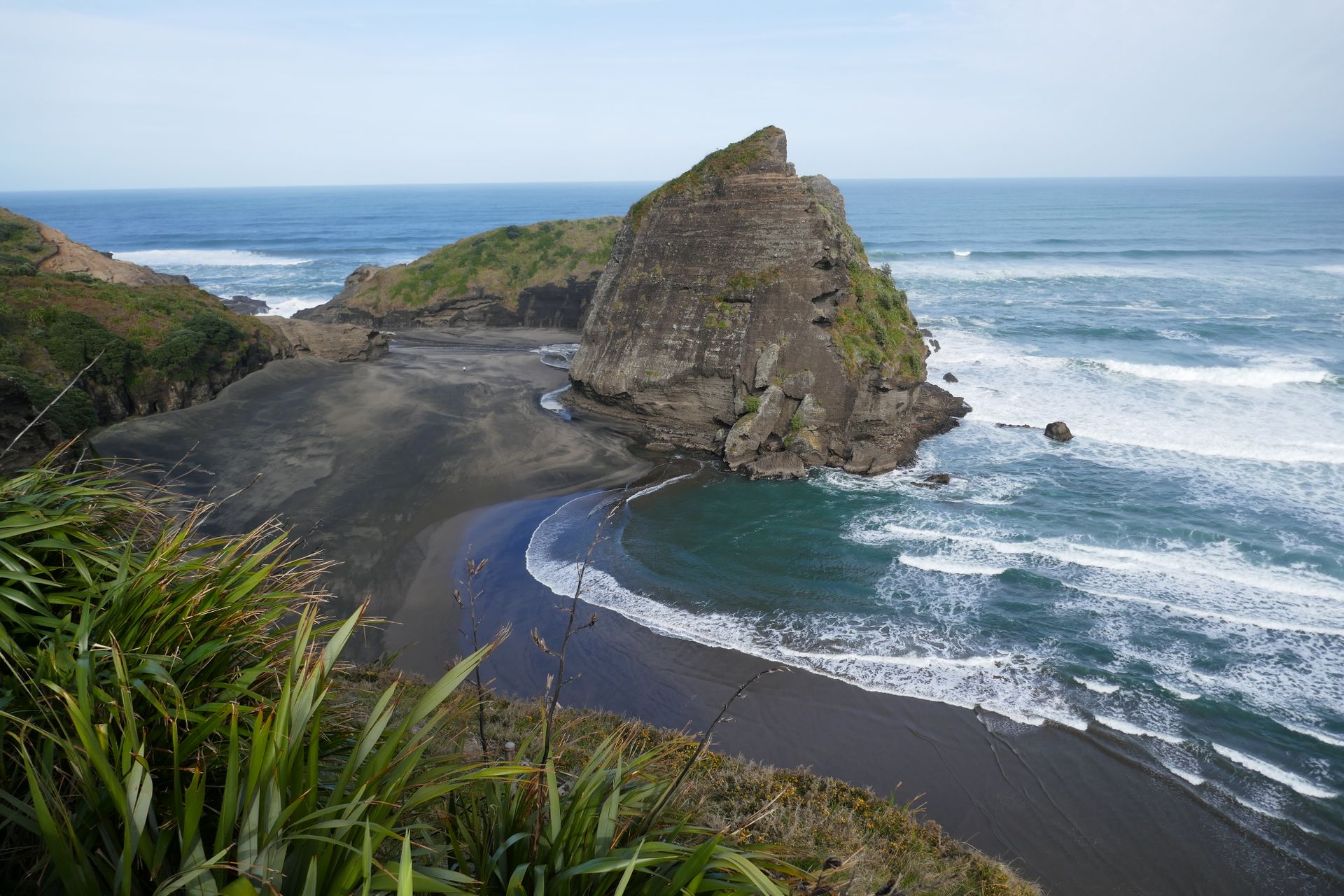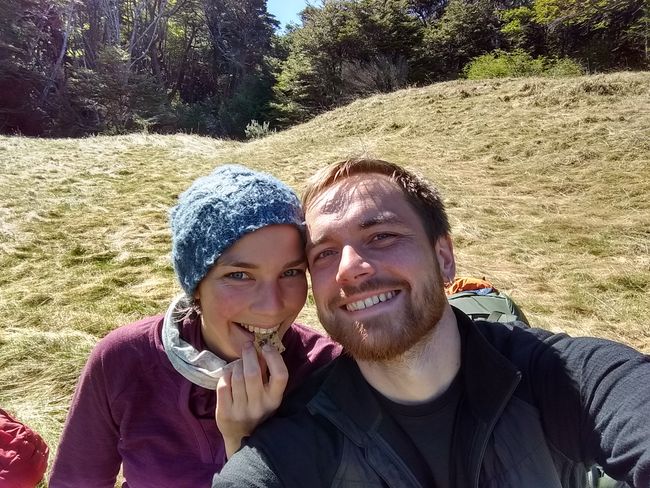Cambodia: Temples, Beaches, and Hammocks
Pubblicato: 08.02.2020
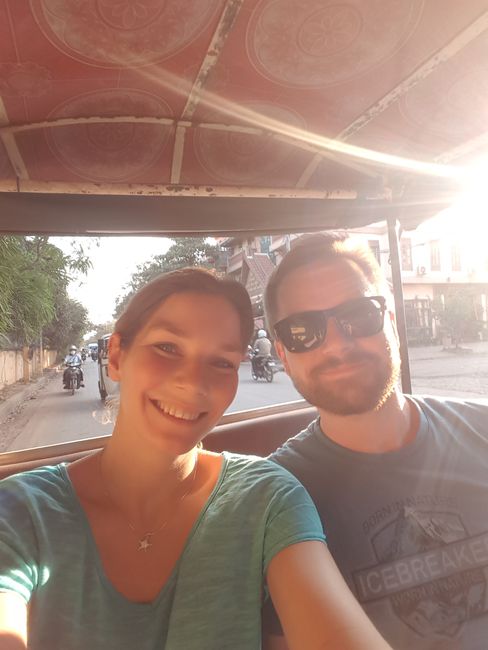
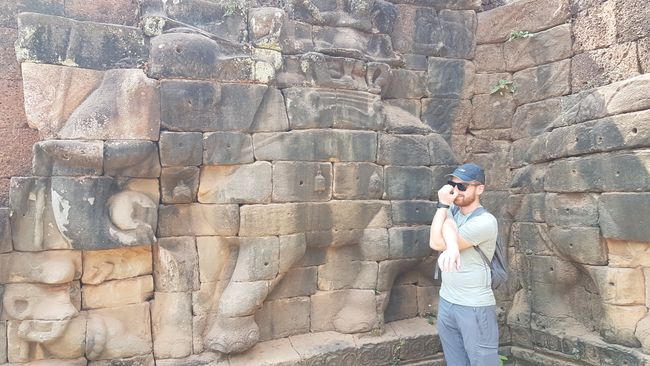
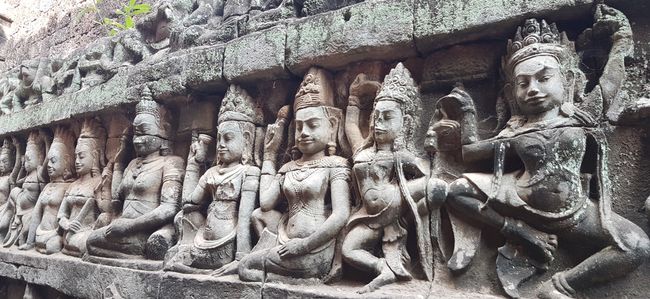
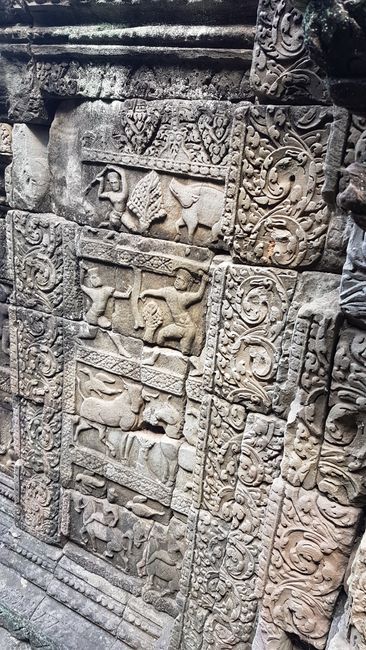
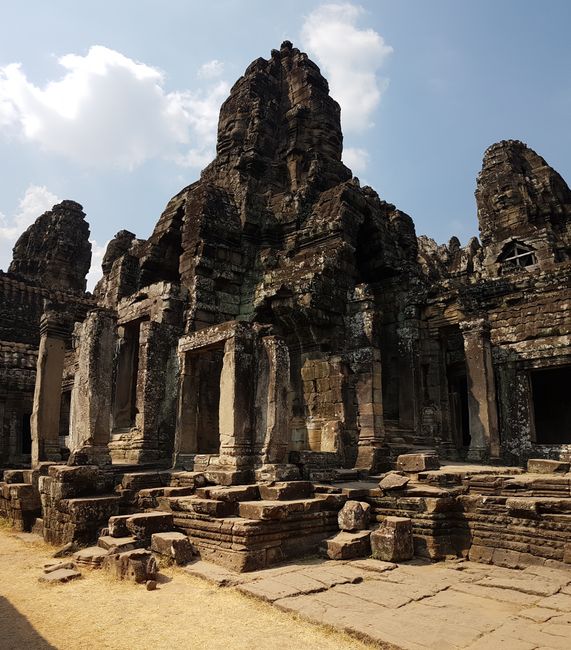
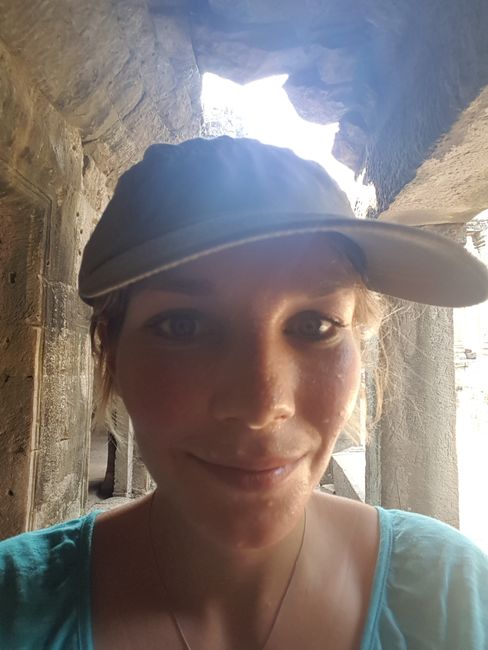
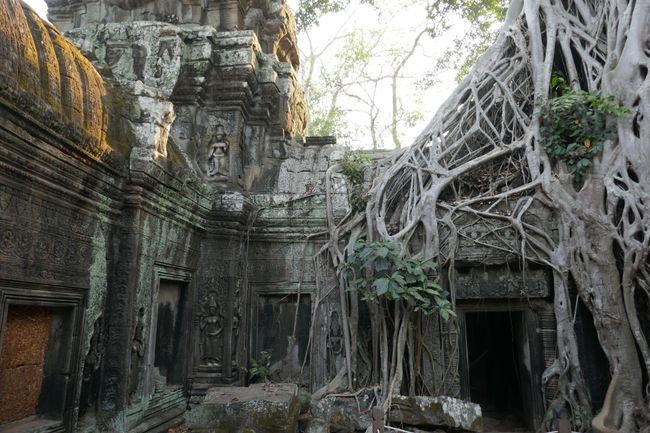
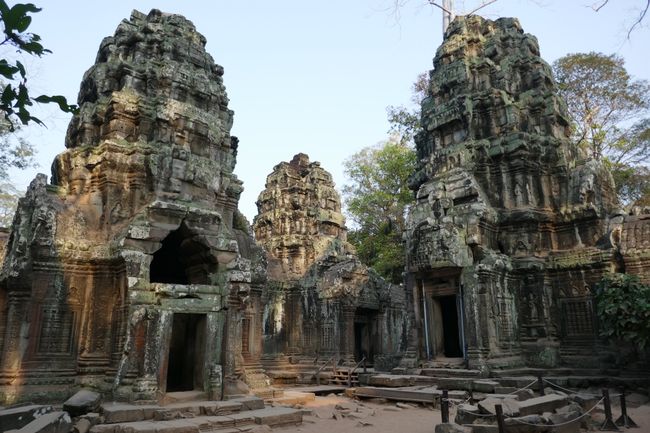
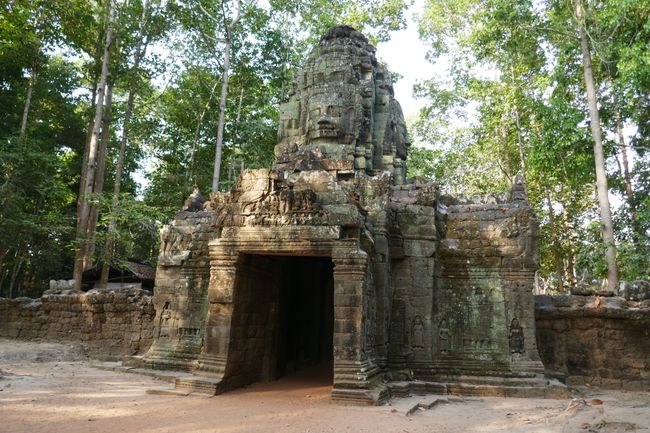
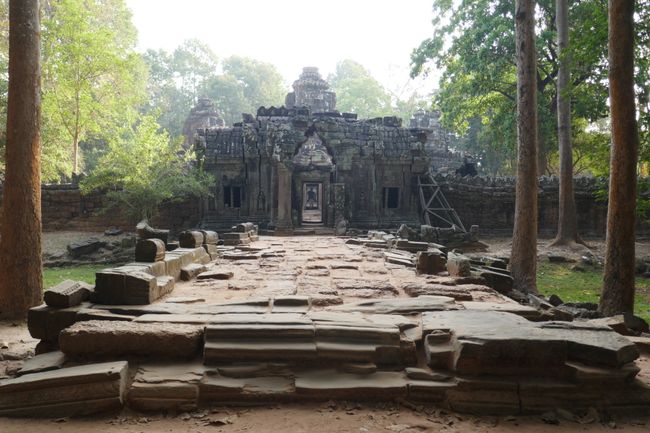
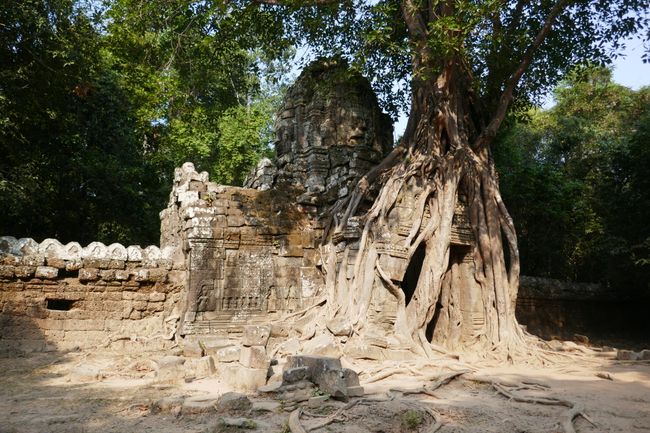
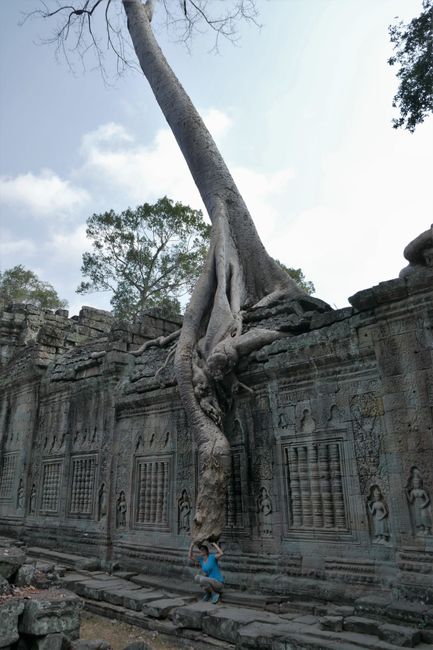
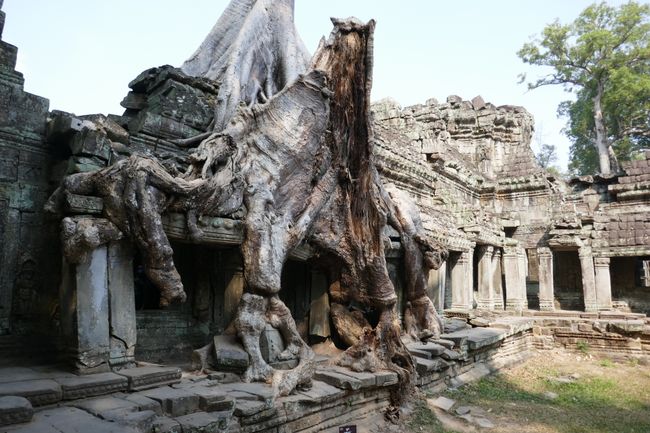
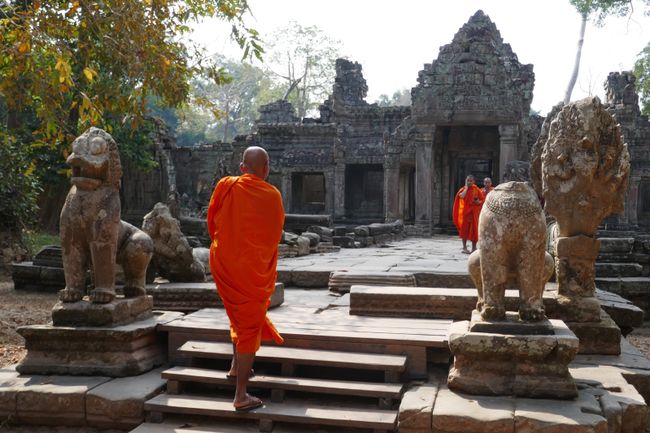
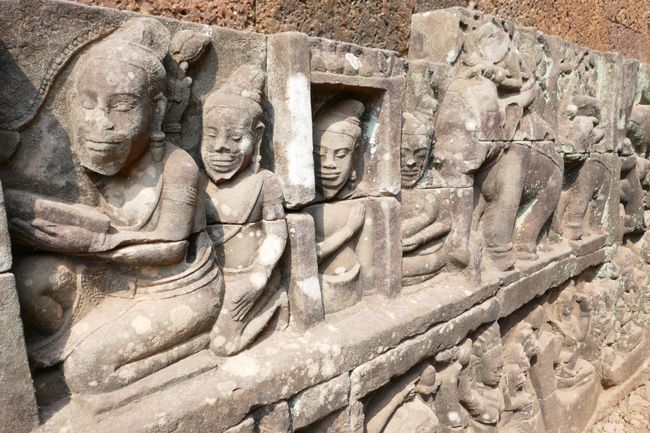
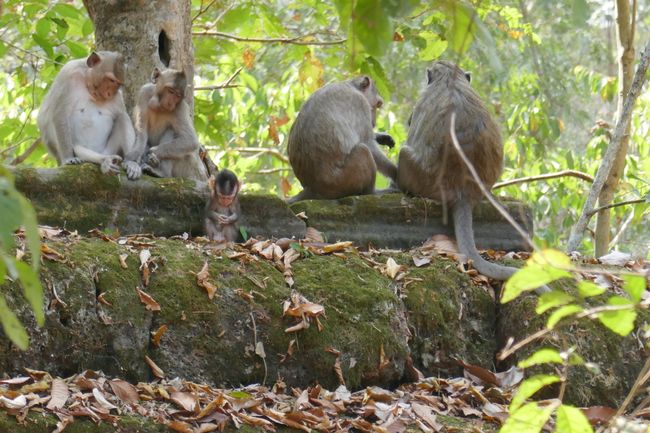
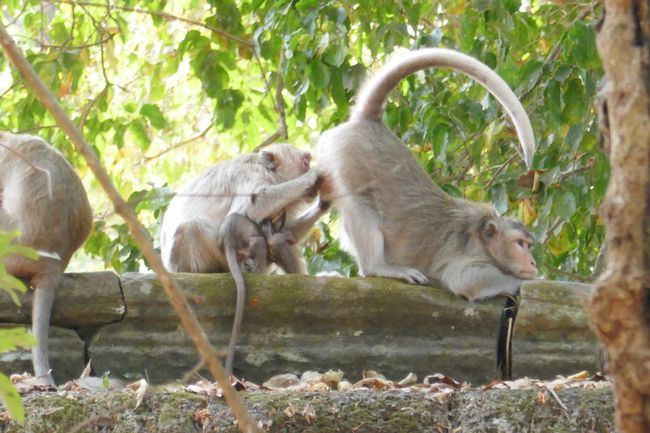
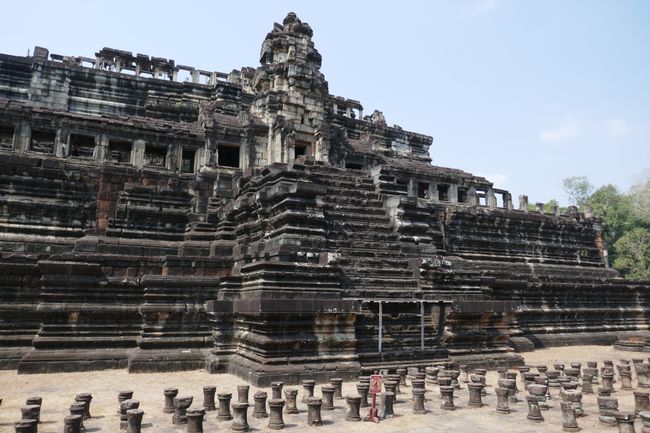
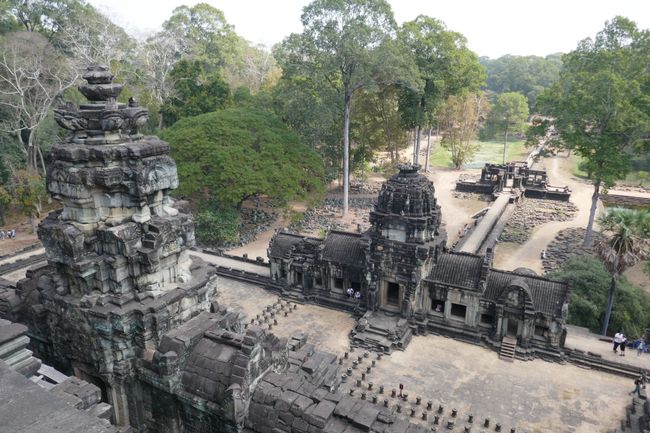
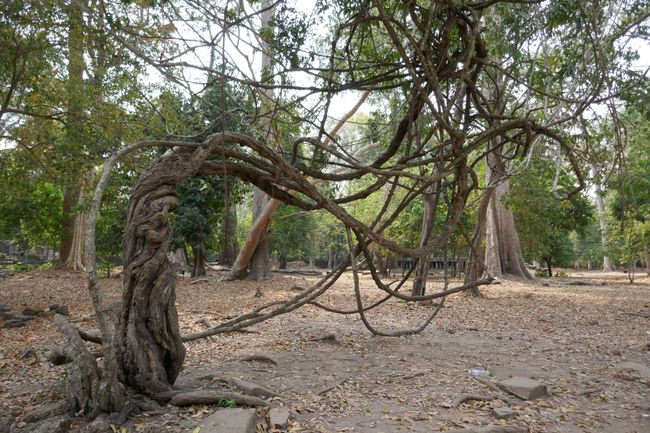
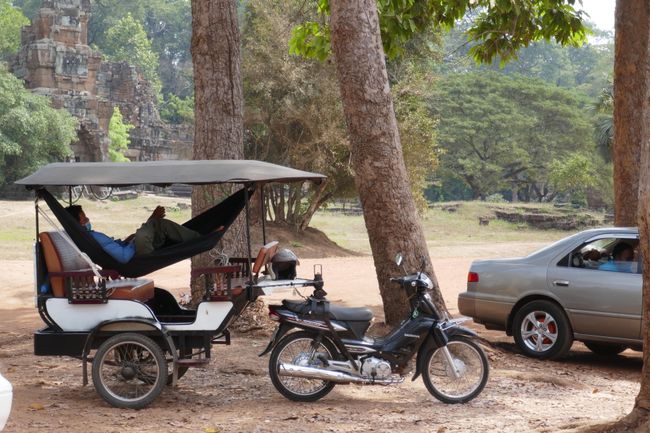
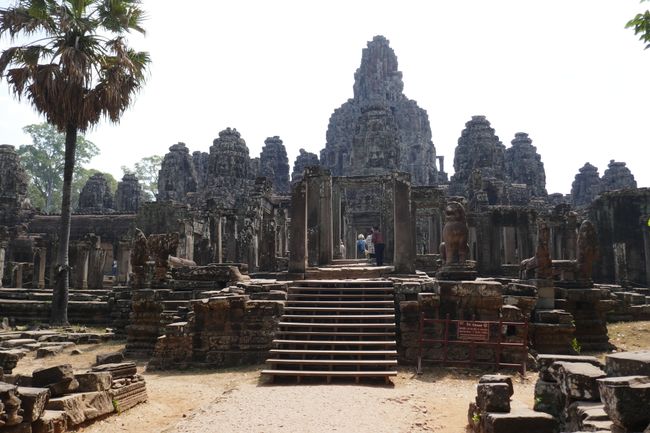
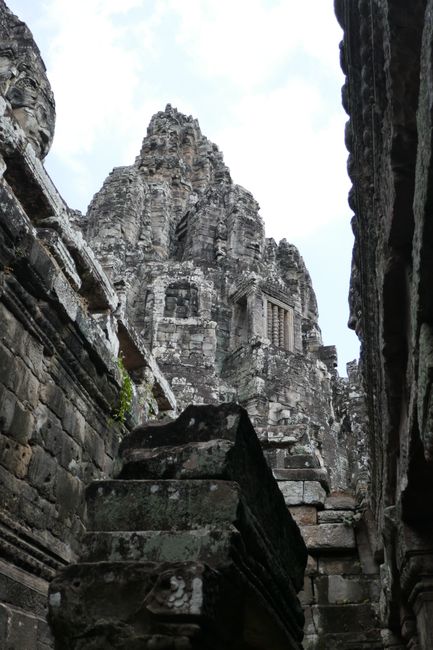
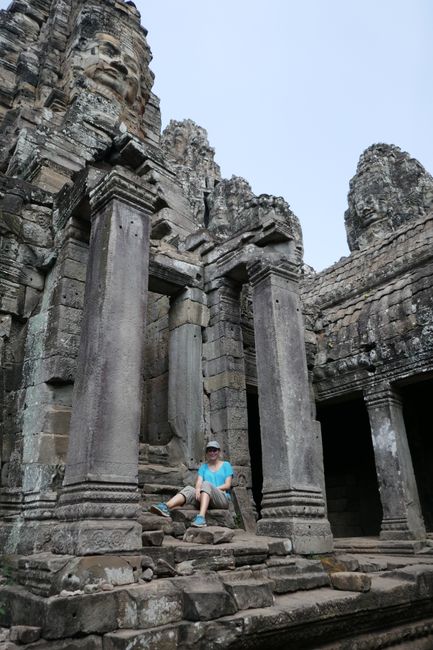
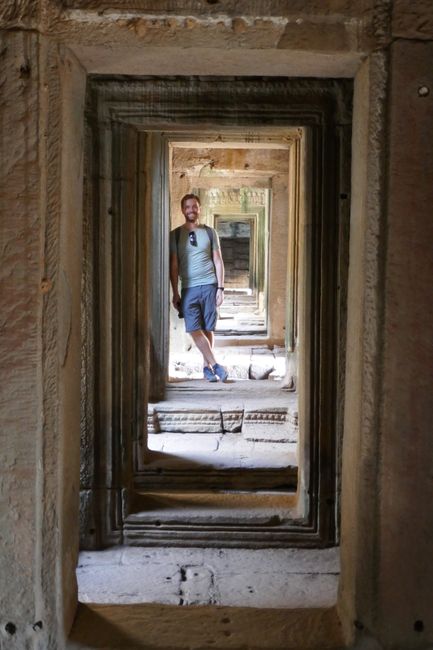
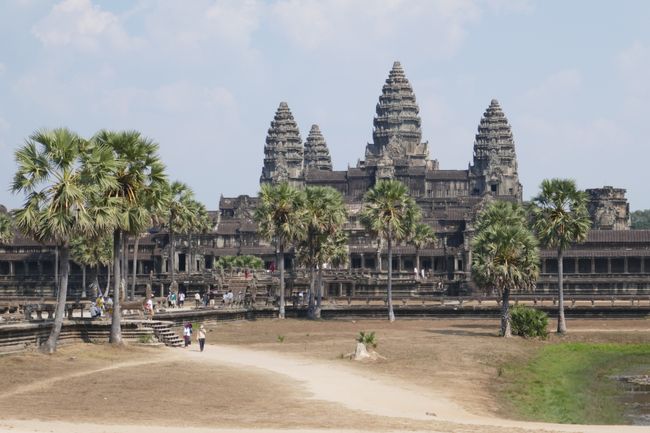
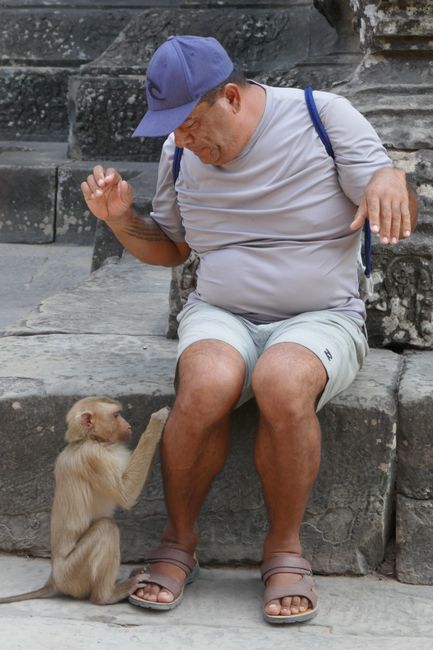
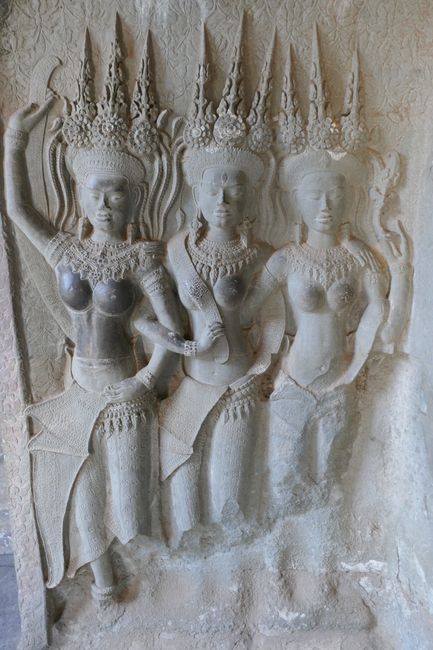
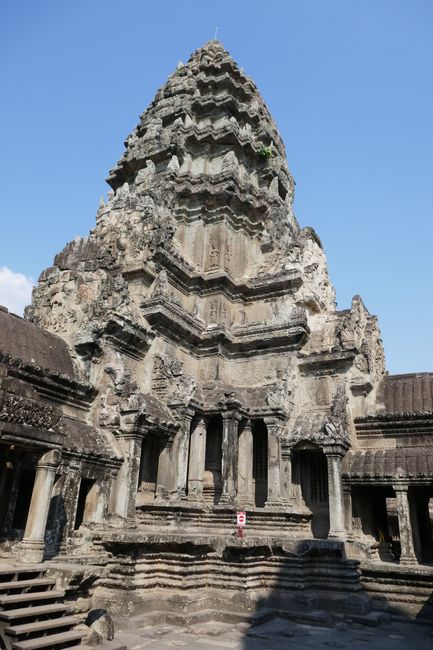
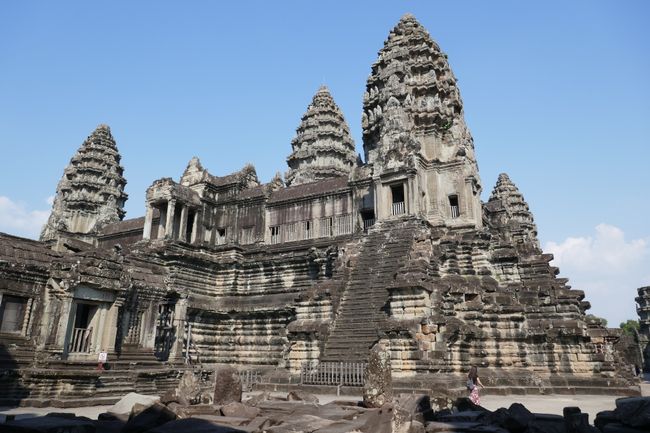
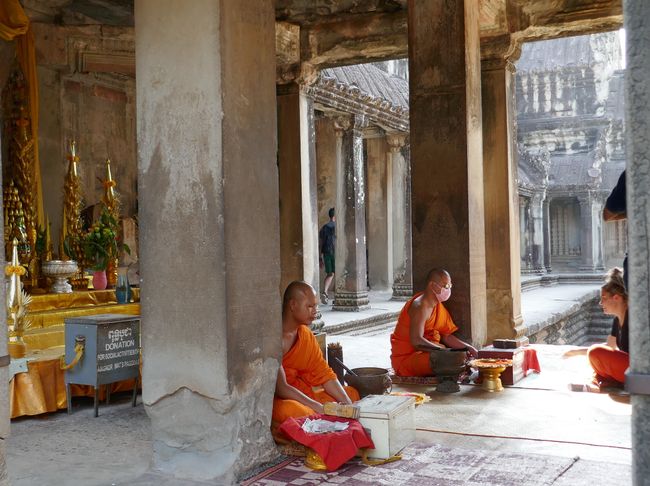
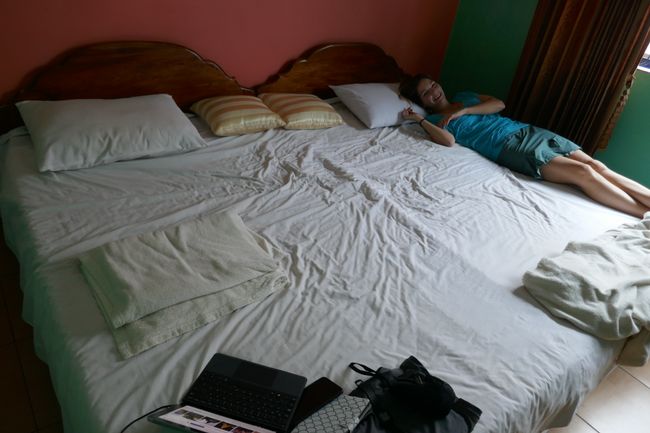
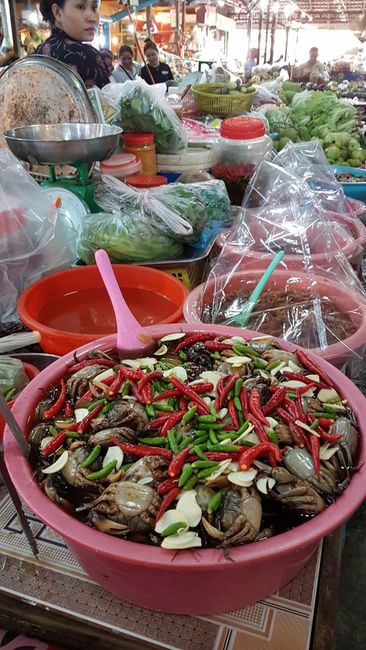
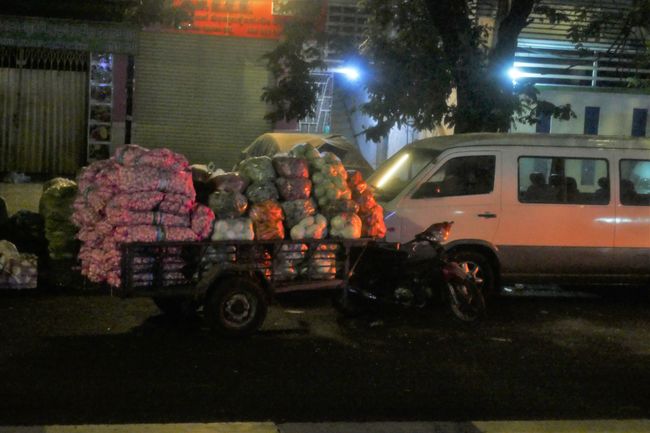
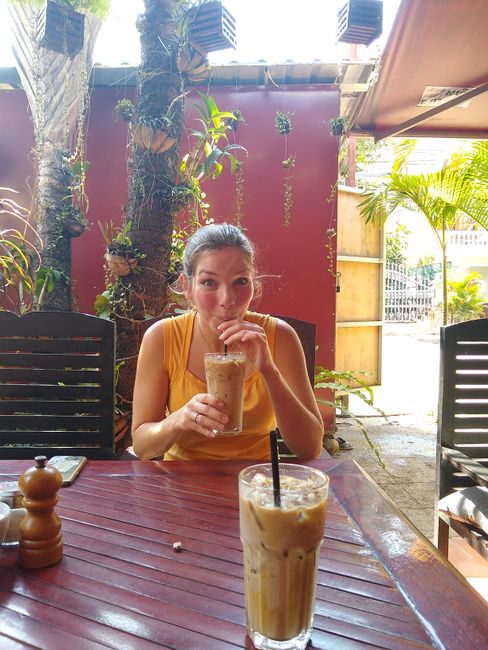
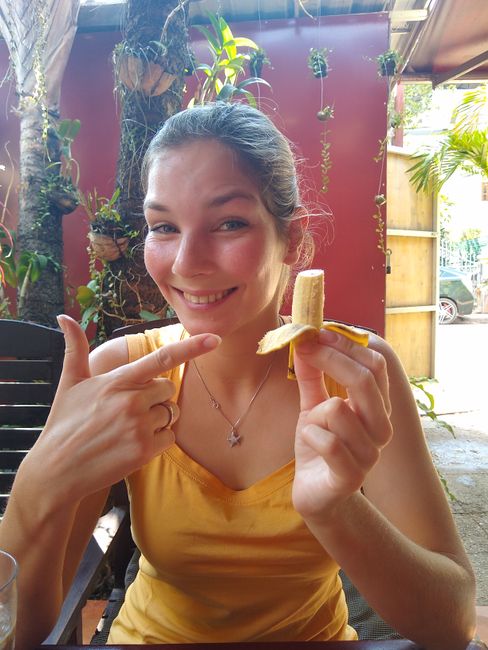
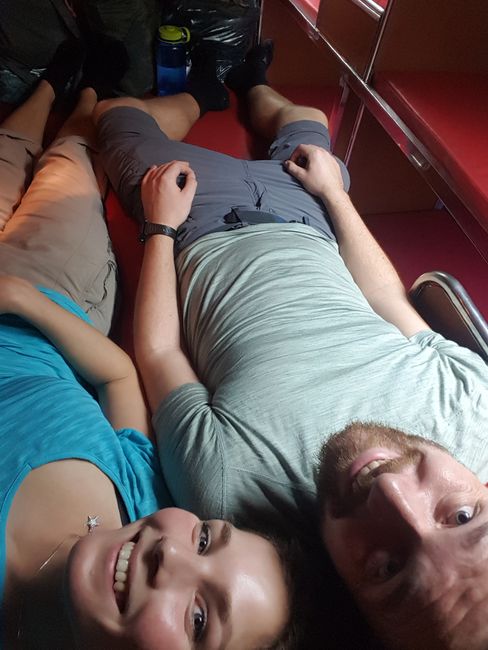
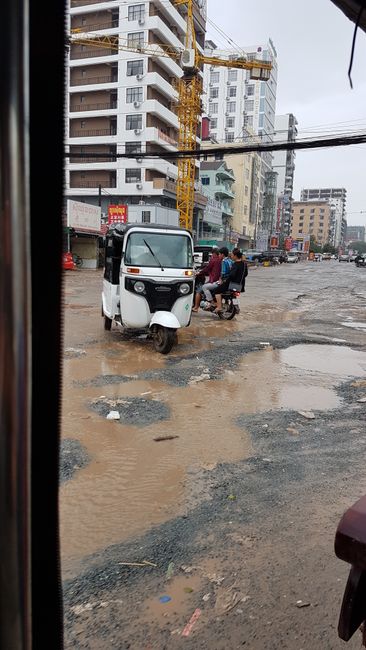
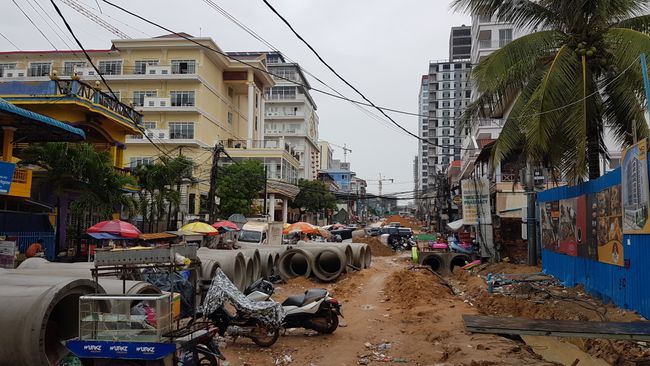
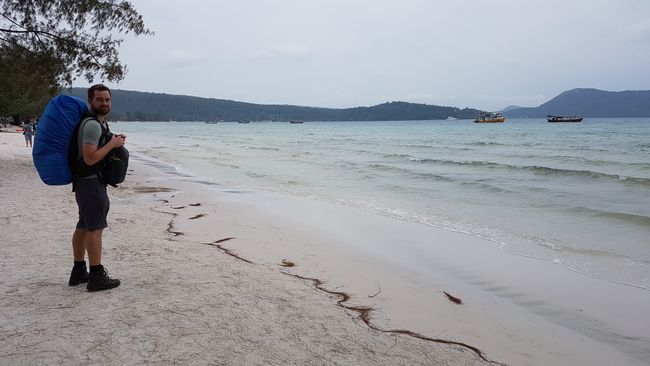
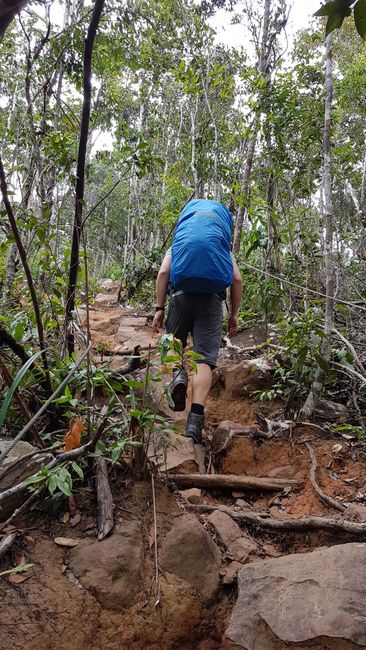
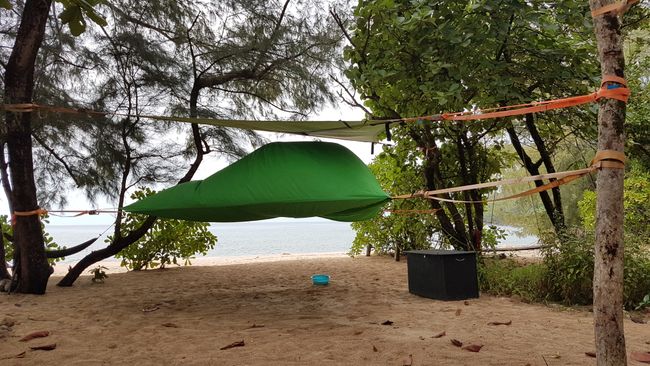
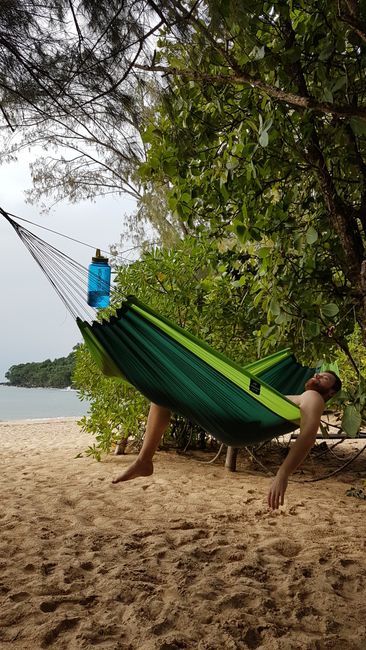
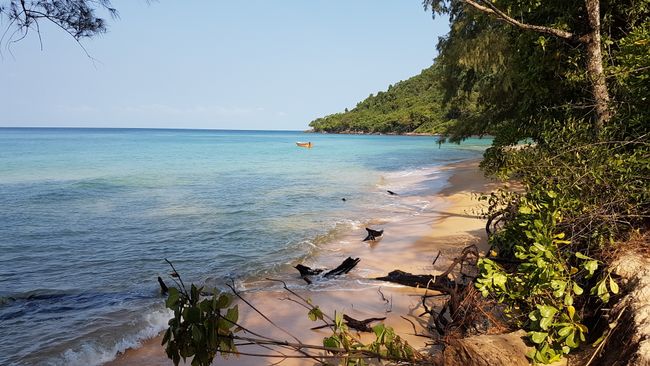
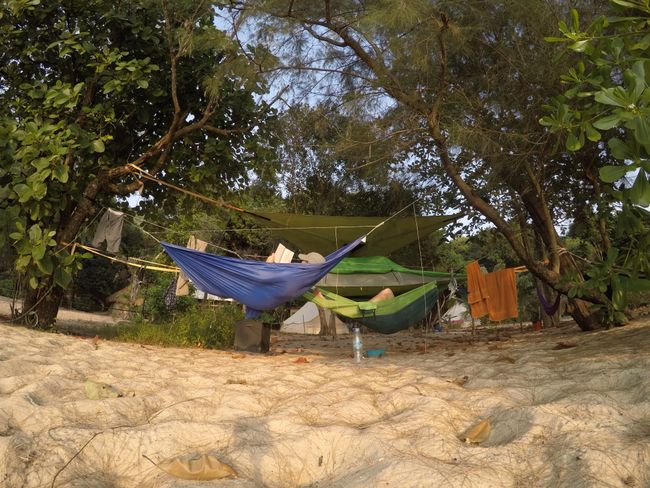
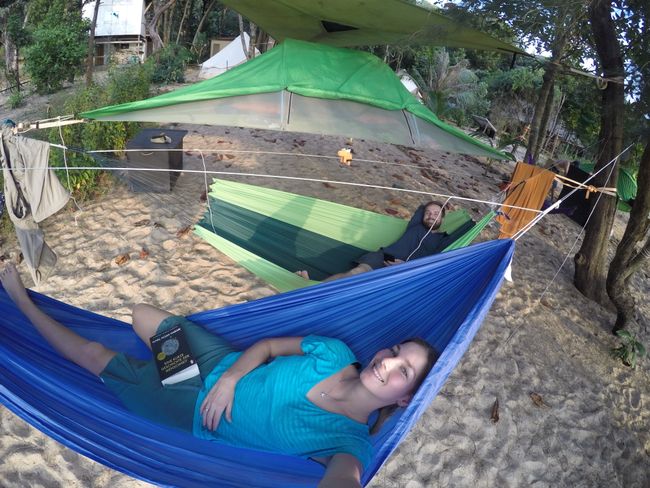
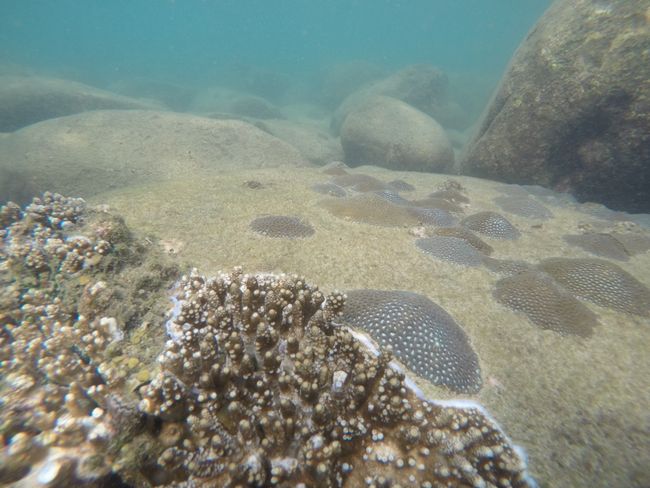
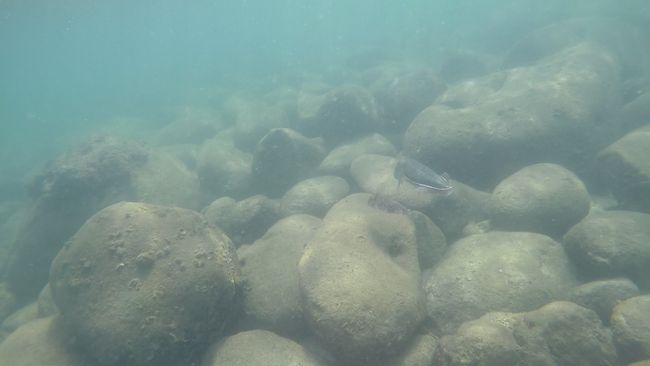
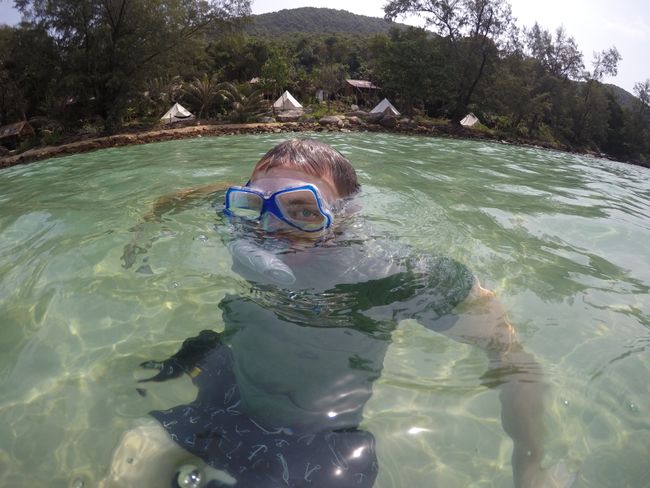
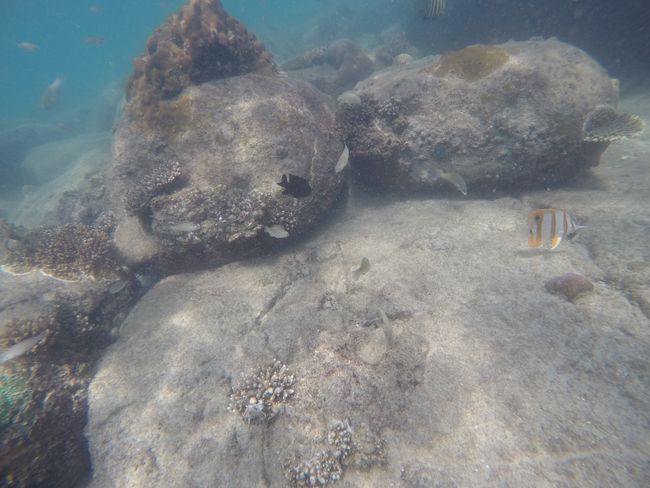
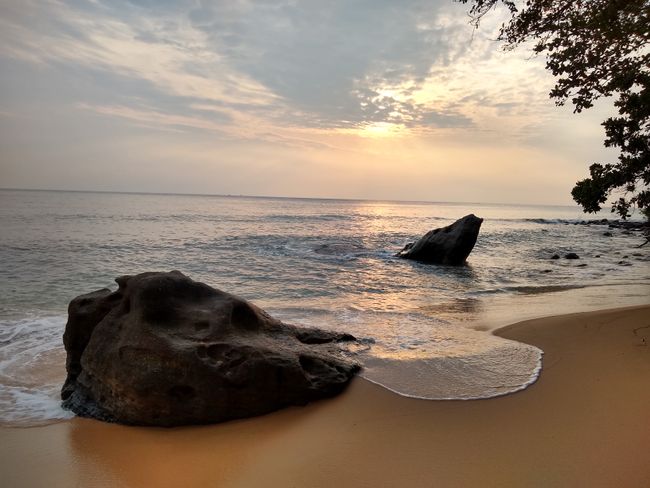
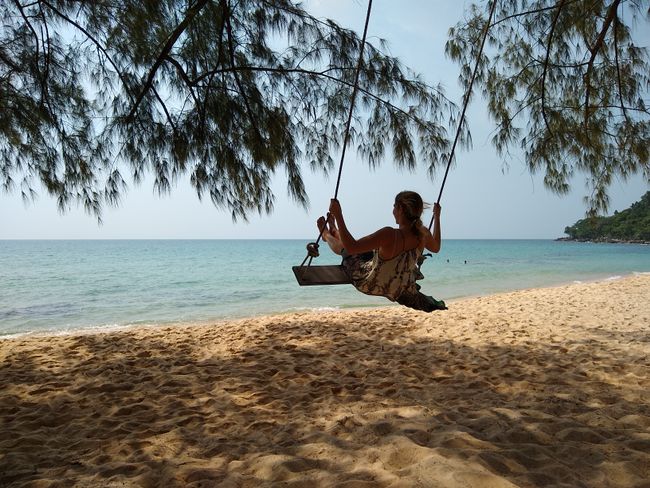
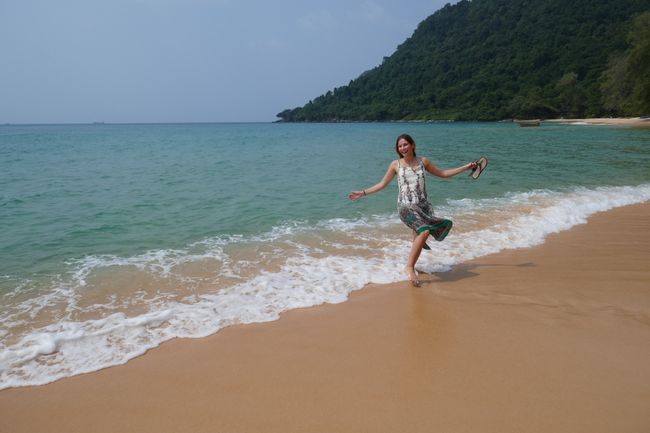
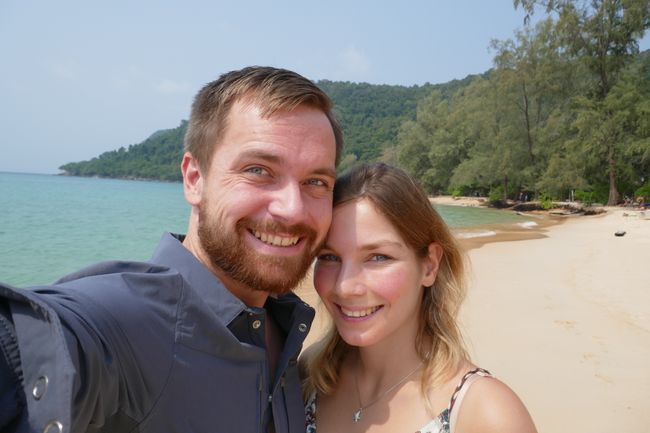
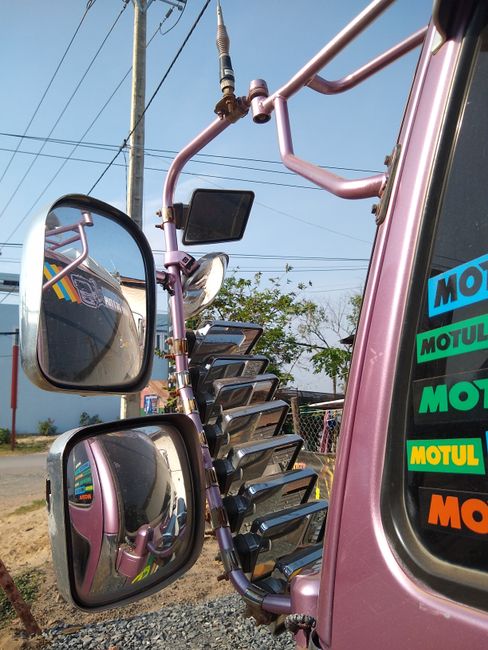
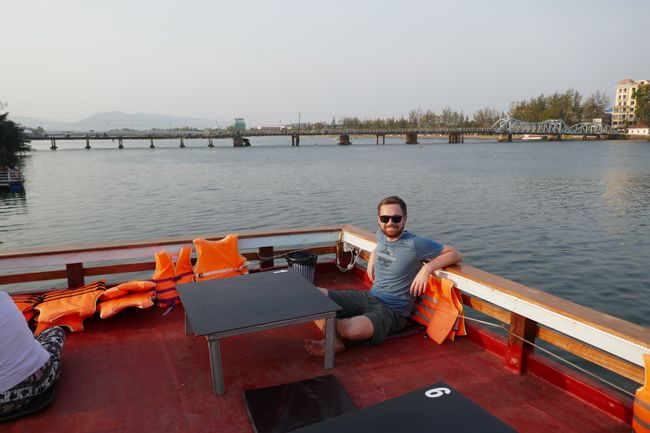
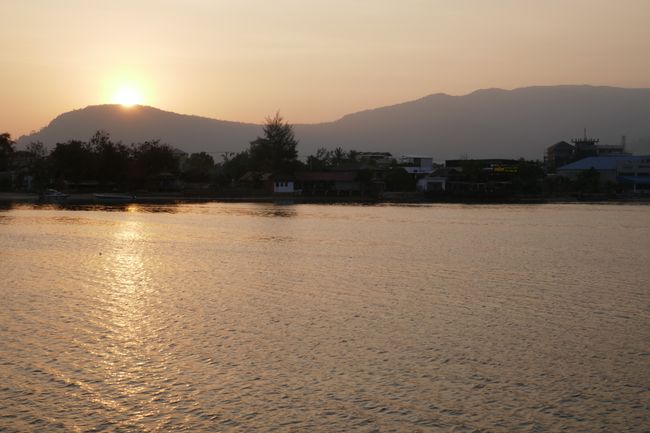
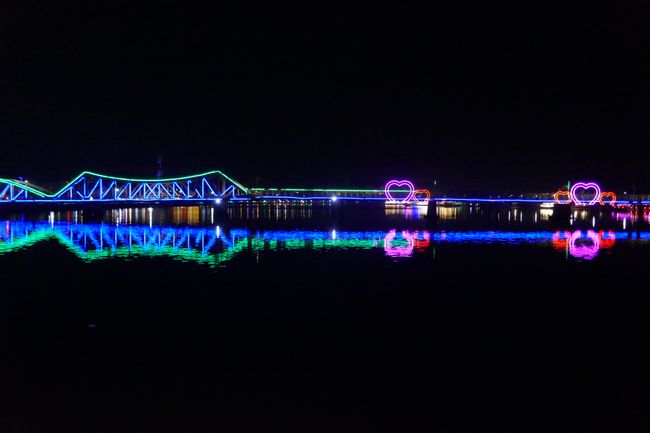
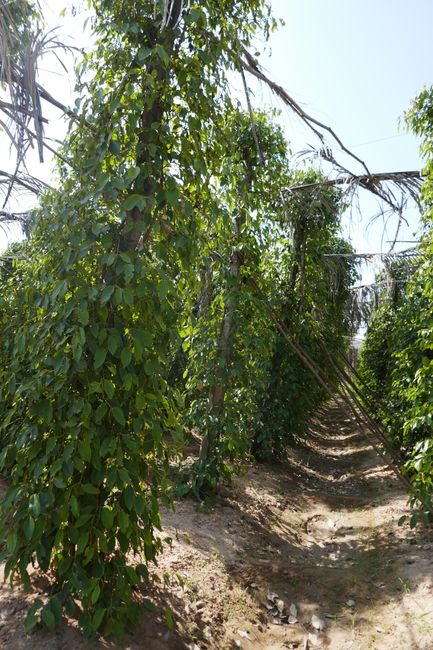
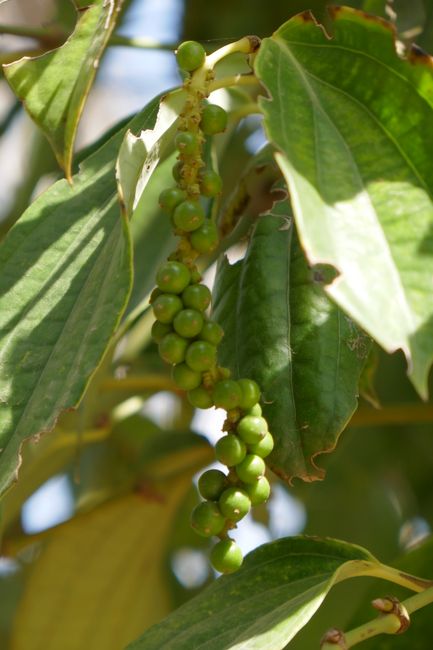
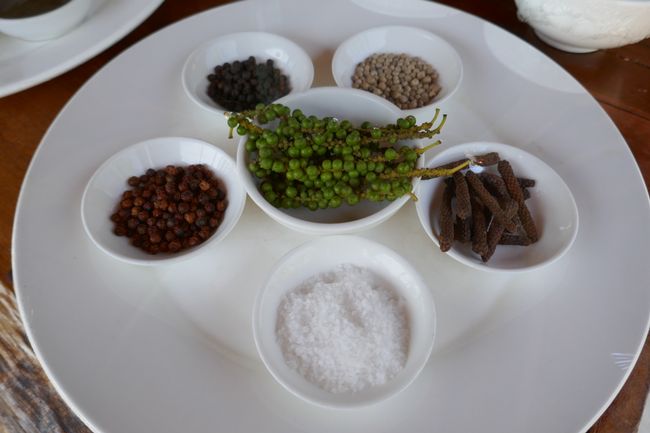
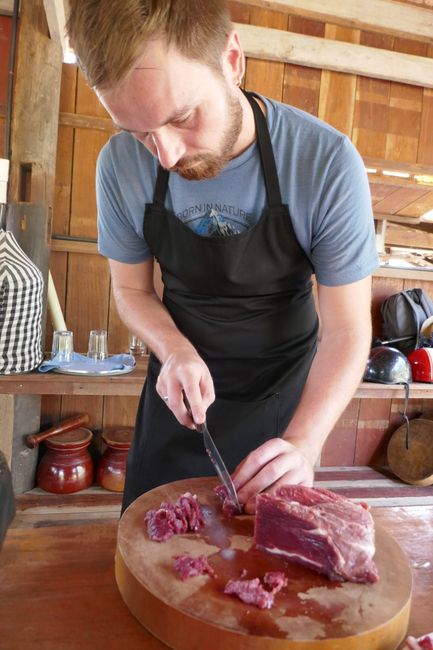
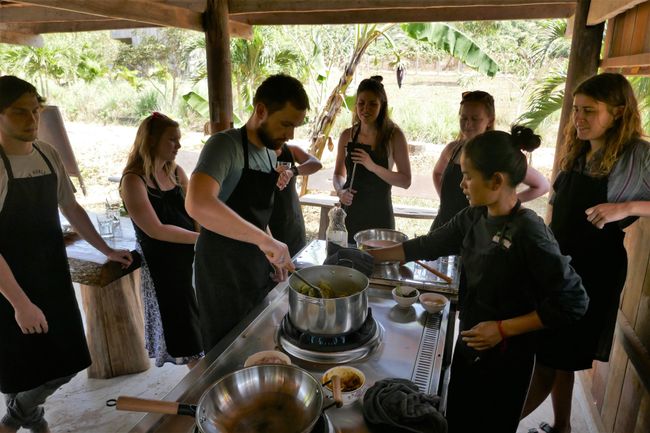
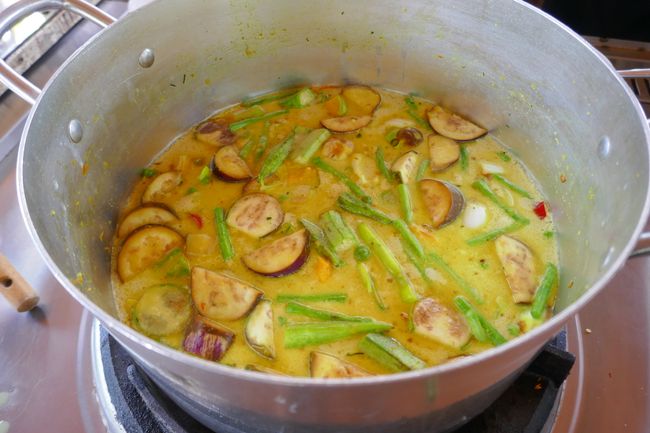
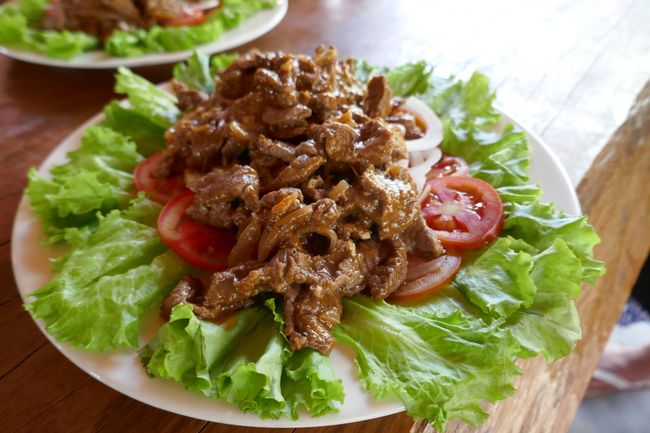
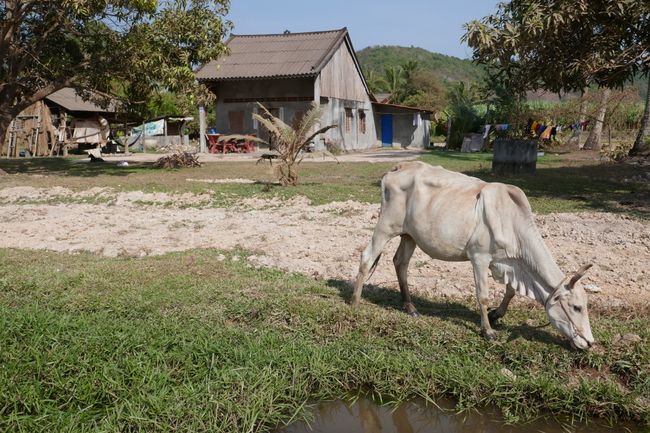
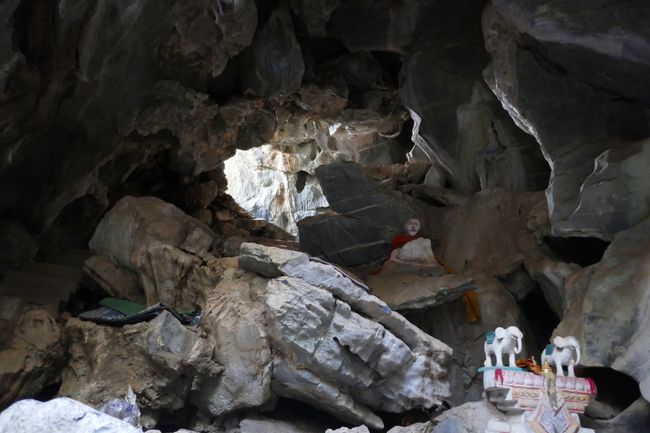
Iscriviti alla Newsletter
Once upon a time, there was a king who incessantly built capitals in the northern part of present-day Cambodia at the end of the 12th century. In the center of each capital, a large main temple and surrounding temples were built. The majority of them were dedicated to Hindu gods. From the 13th century, Buddhism began to gain popularity. The cities were equipped with a sophisticated irrigation system that allowed rice to be harvested multiple times a year. The profits were used to build more temples. At its peak, over one million people lived in the area. Eventually, prolonged droughts followed by strong monsoons occurred. The irrigation system collapsed, and the large population could not be sustained, so they moved on... Other sources attribute the decline to the rising Thai empire. Only the temples were built as stone abodes for the gods. The wooden houses rotted away, and the jungle buried the temples (not including the Angkor Wat temple). It wasn't until the 1980s (!) that a Frenchman rediscovered the gigantic stone temples in the jungle. The sites were uncovered, and restoration and partial reconstruction work continues to this day. It is fascinating how colossal structures of a former civilization can seemingly sleep in the jungle for centuries, forgotten by the world.
We boarded a tuk-tuk and started with the Ta Prohm temple. Giant strangler fig trees grow on the walls, their roots stabilizing and destabilizing the structure at the same time. Therefore, they couldn't be removed during the excavation. Together with all the relief work in sandstone, it was a fantastic start. Tomb Raider was filmed there.


The Ta Som temple was noticeably smaller.
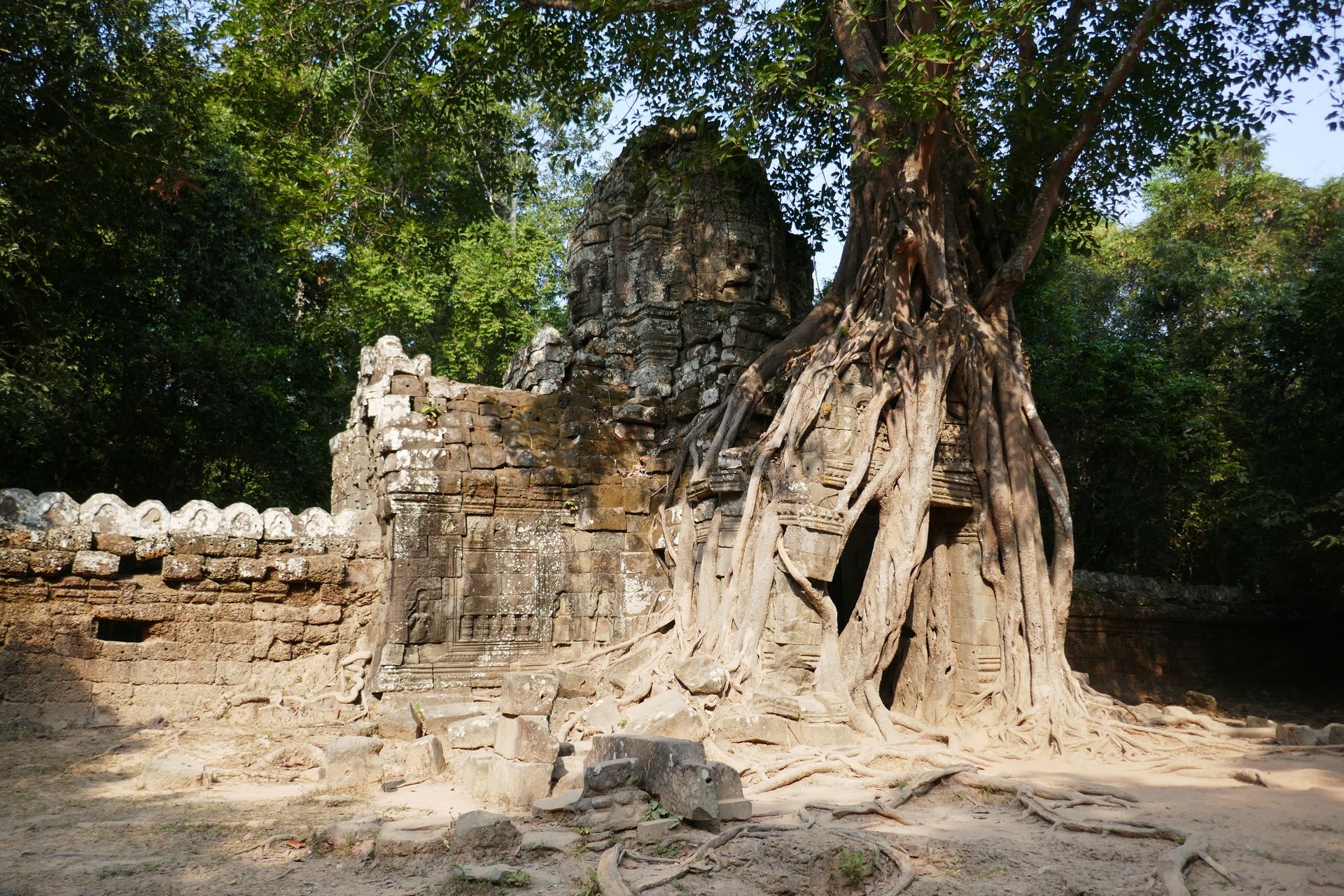
The walls of the Preah Khan temple were adorned with dancing figures. The figures, carved into the sandstone, are also called Apsaras. They served as entertainment for the royal family and were mediators between the earthly and heavenly worlds.
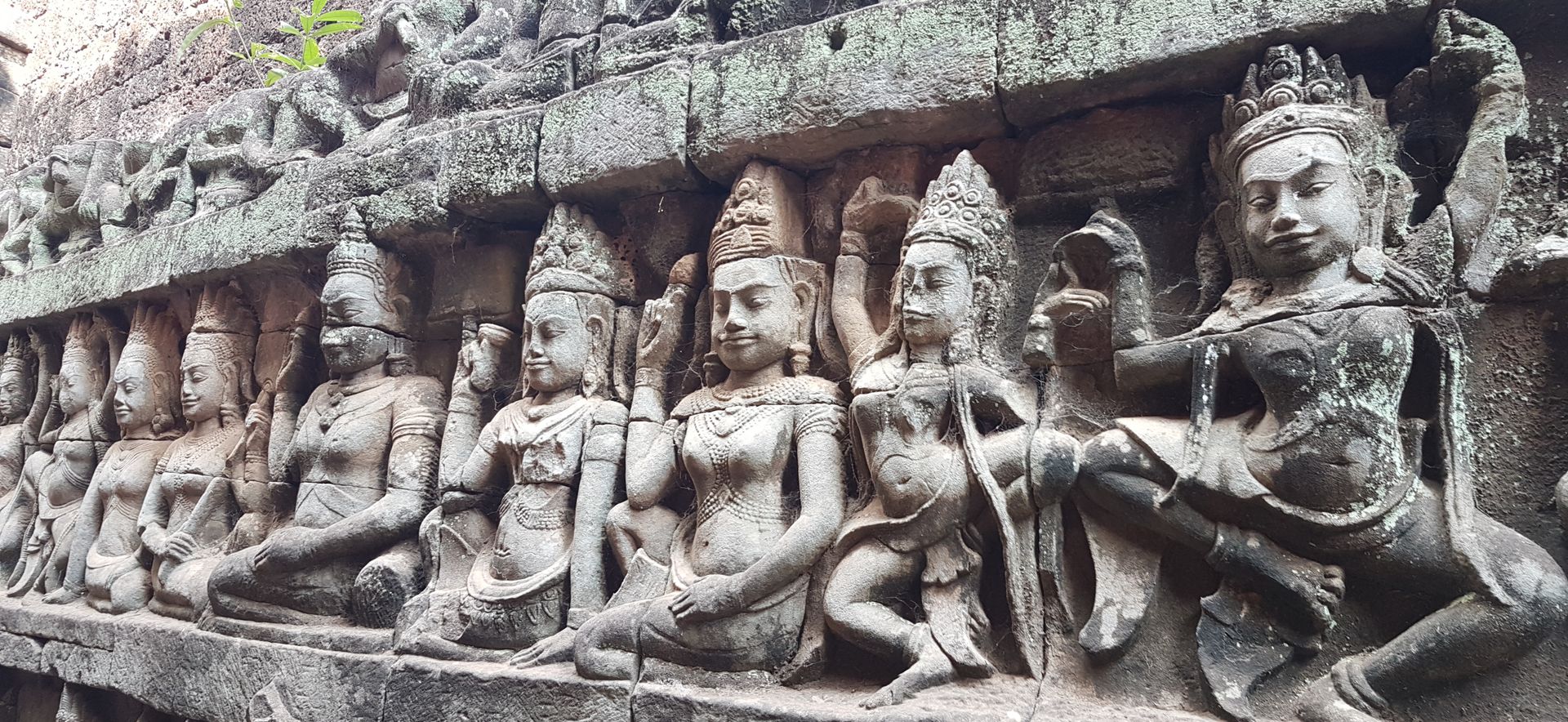
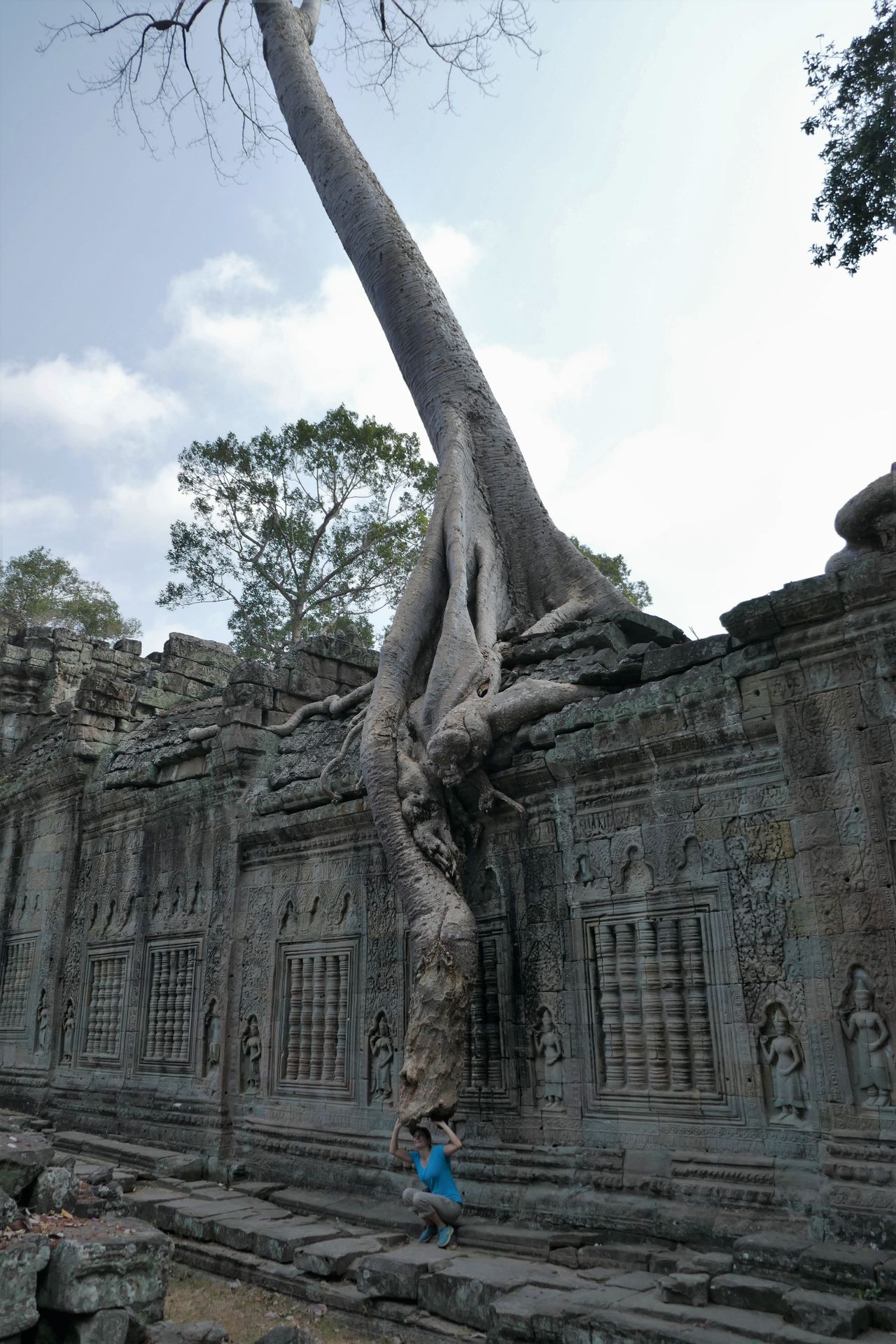
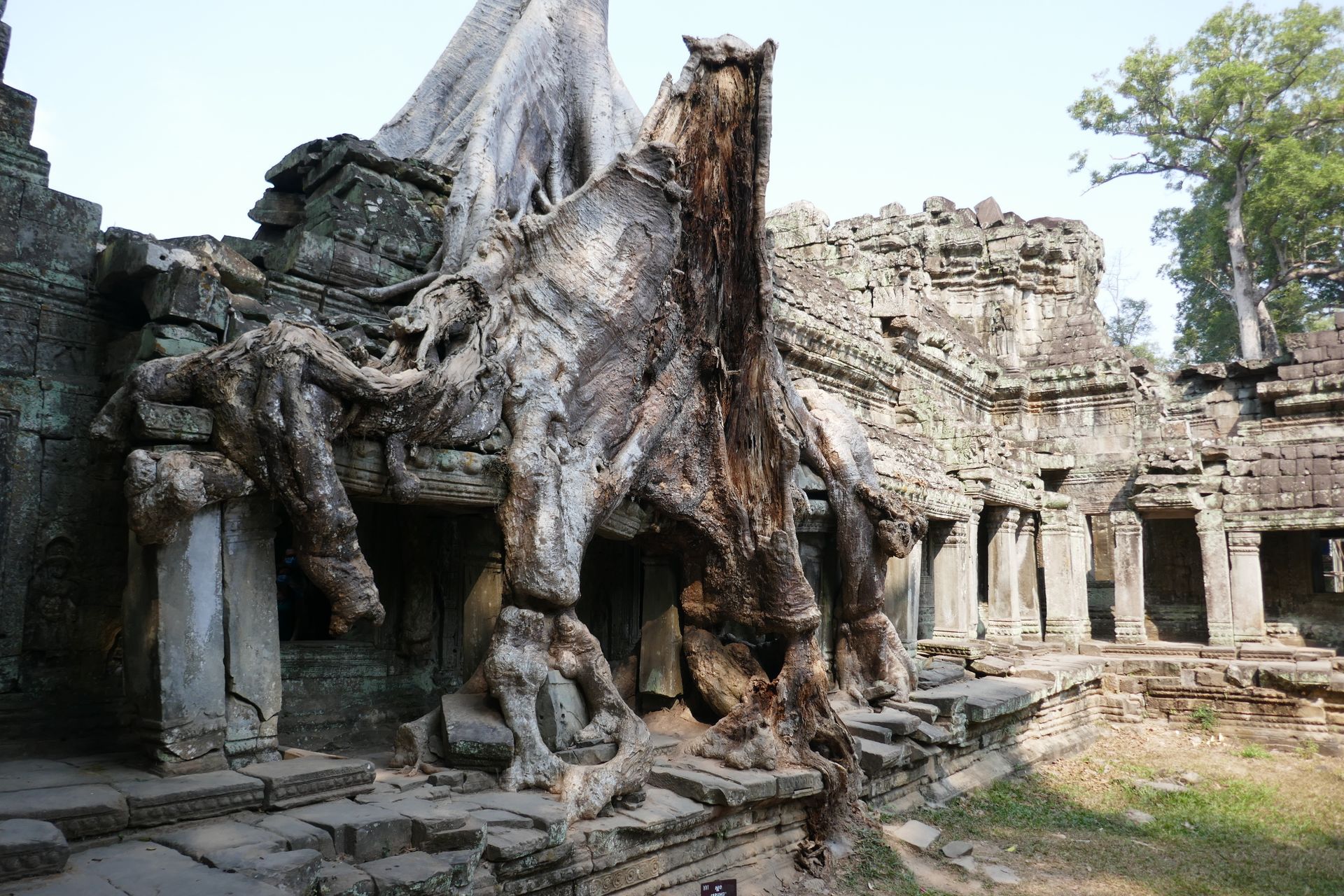
In the next capital, Angkor Thom, we walked past the Terrace of the Leper King, climbed a temple with a steep wooden staircase, watched monkeys grooming each other, and finally reached the highlight, the Bayon temple. Standing in the inner courtyard, we craned our necks to look up. The towers looked like natural rocks, only with faces. We were deeply impressed, and our faces were sweaty from the heat.
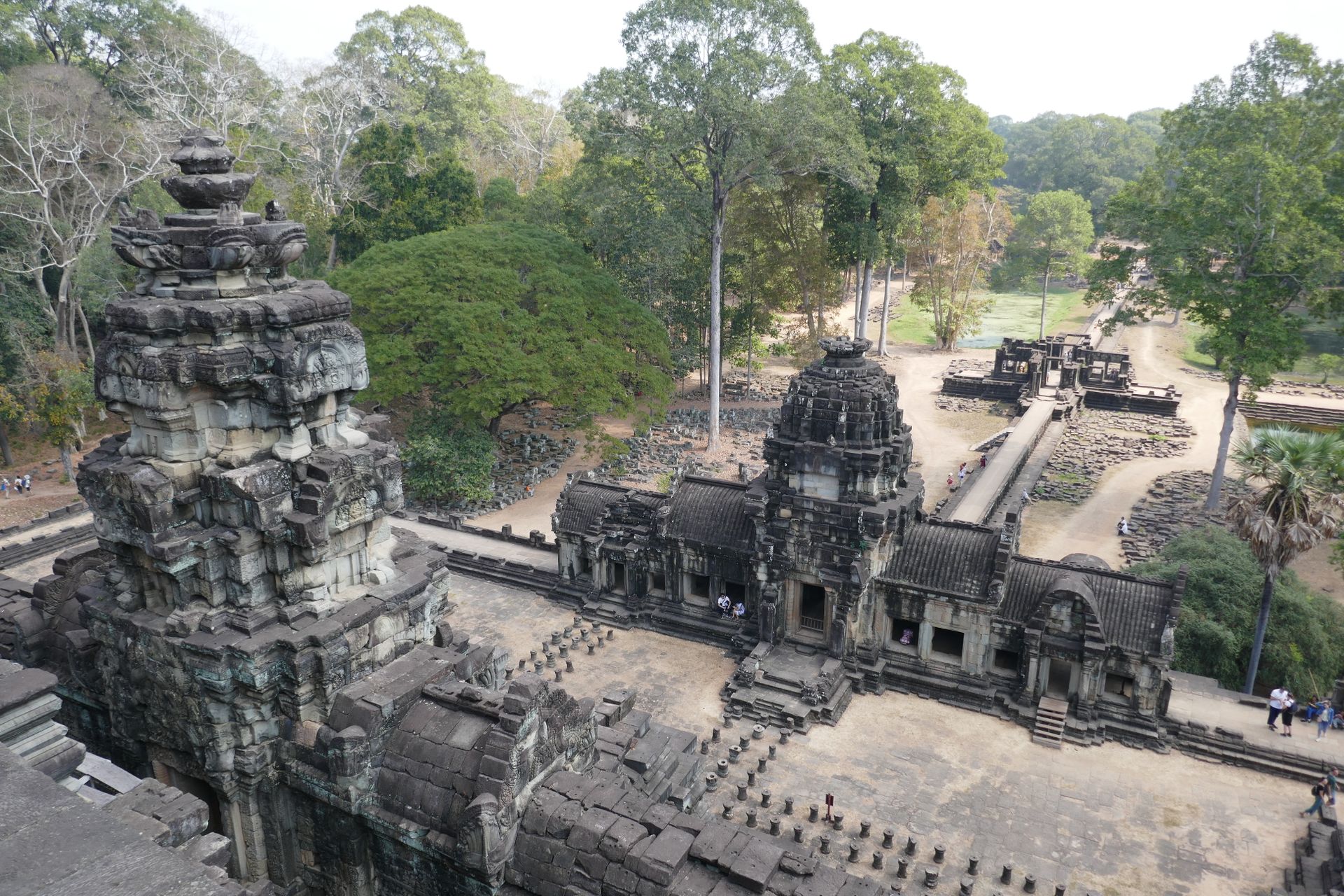
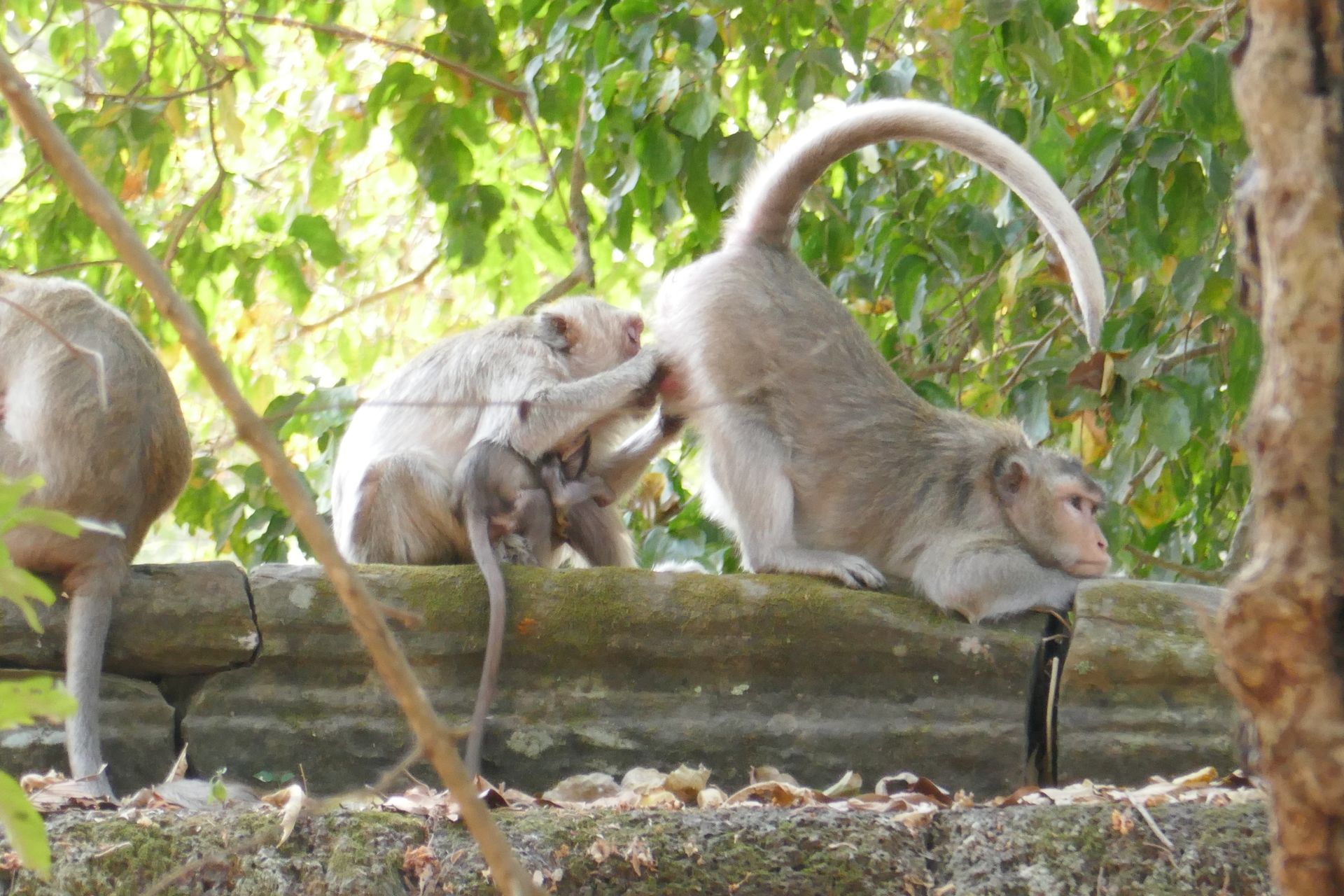

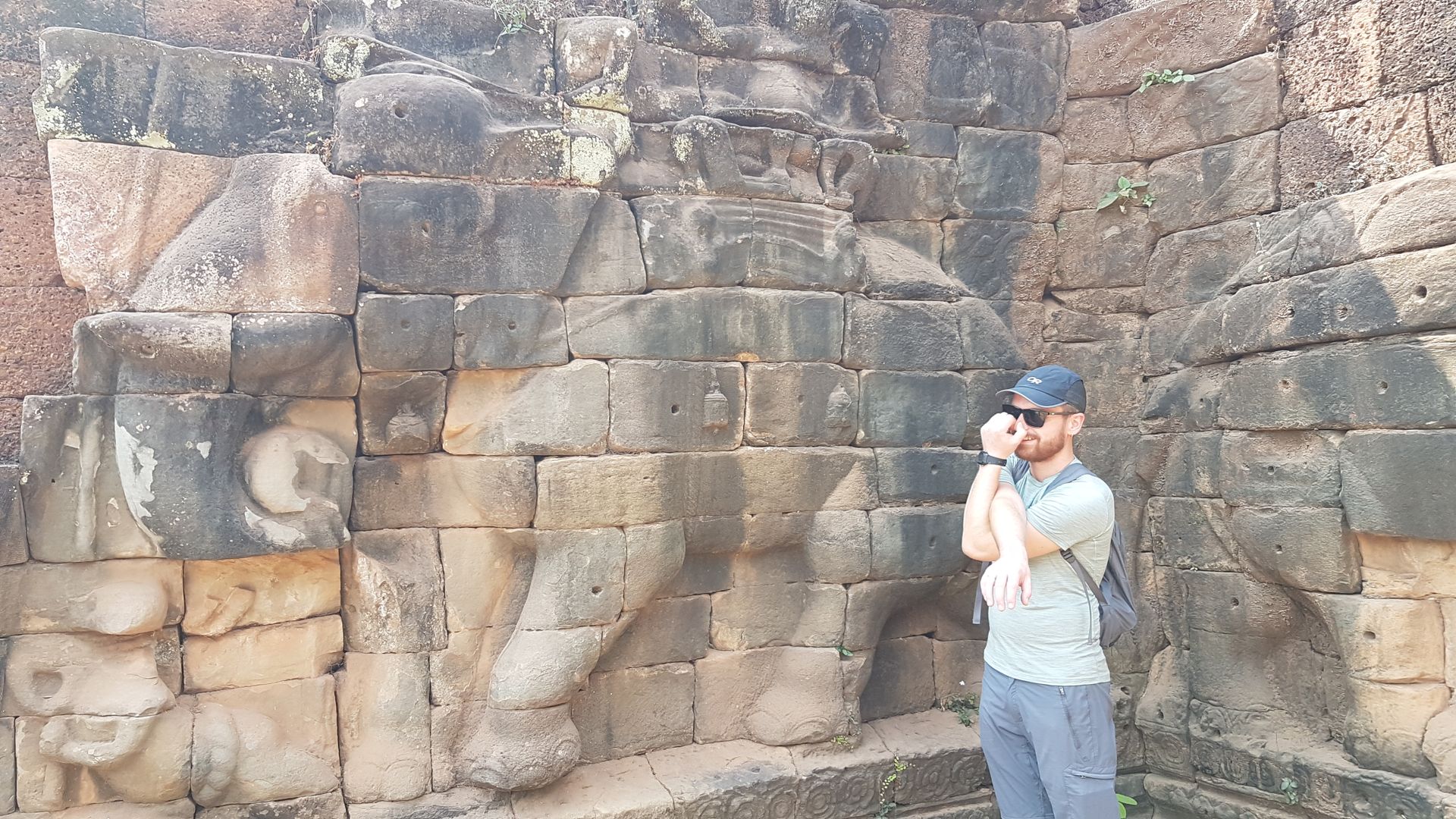
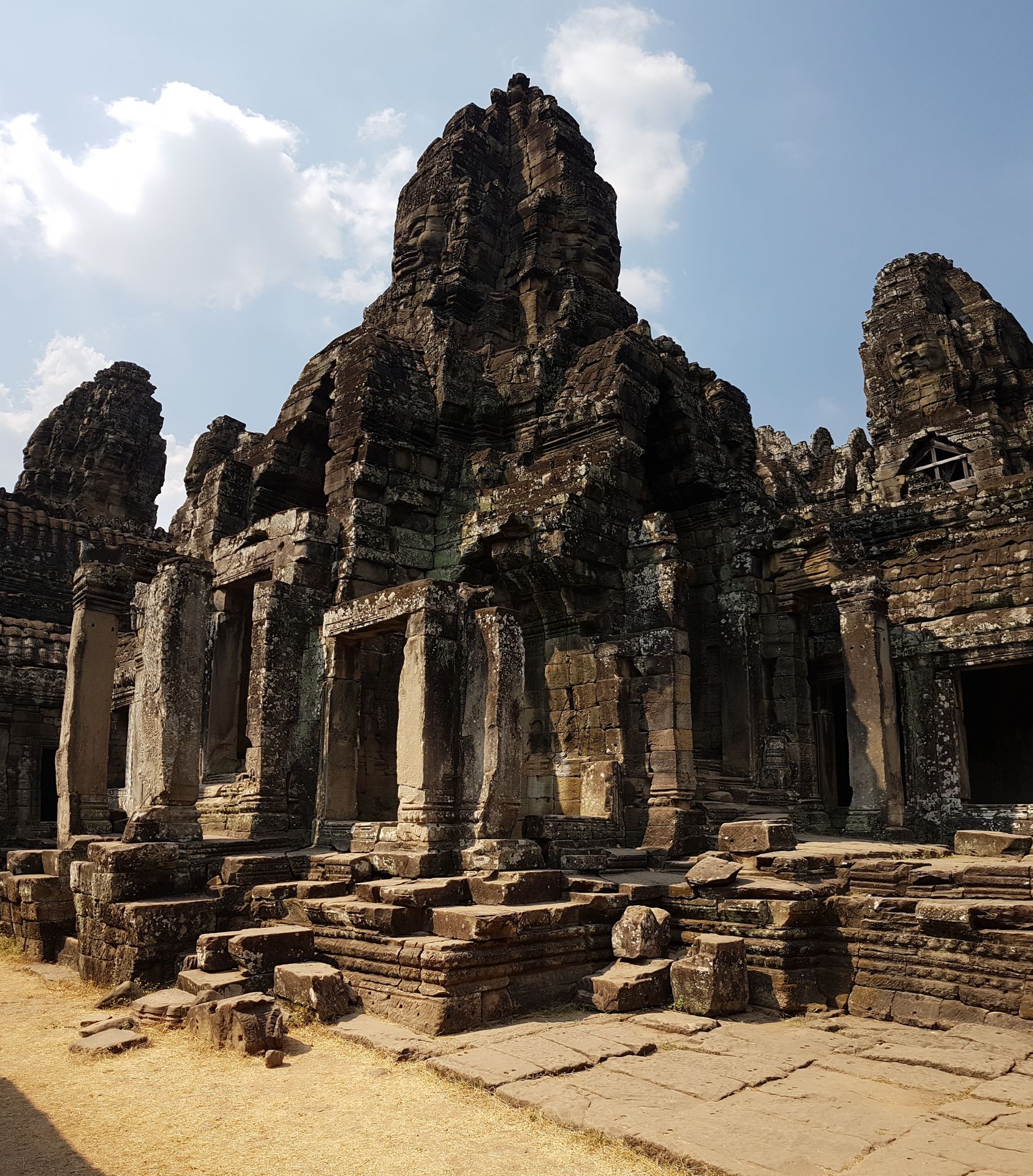


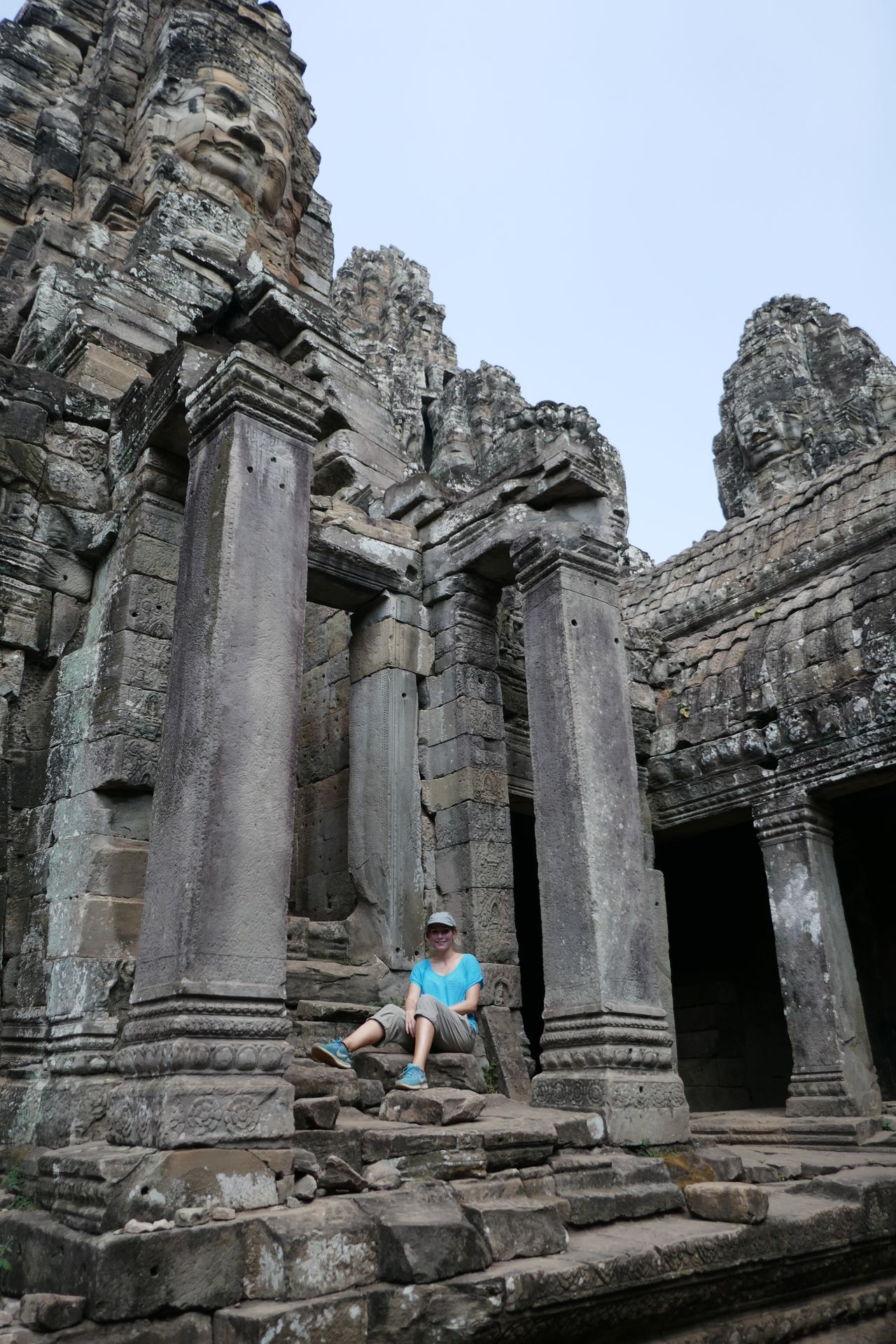
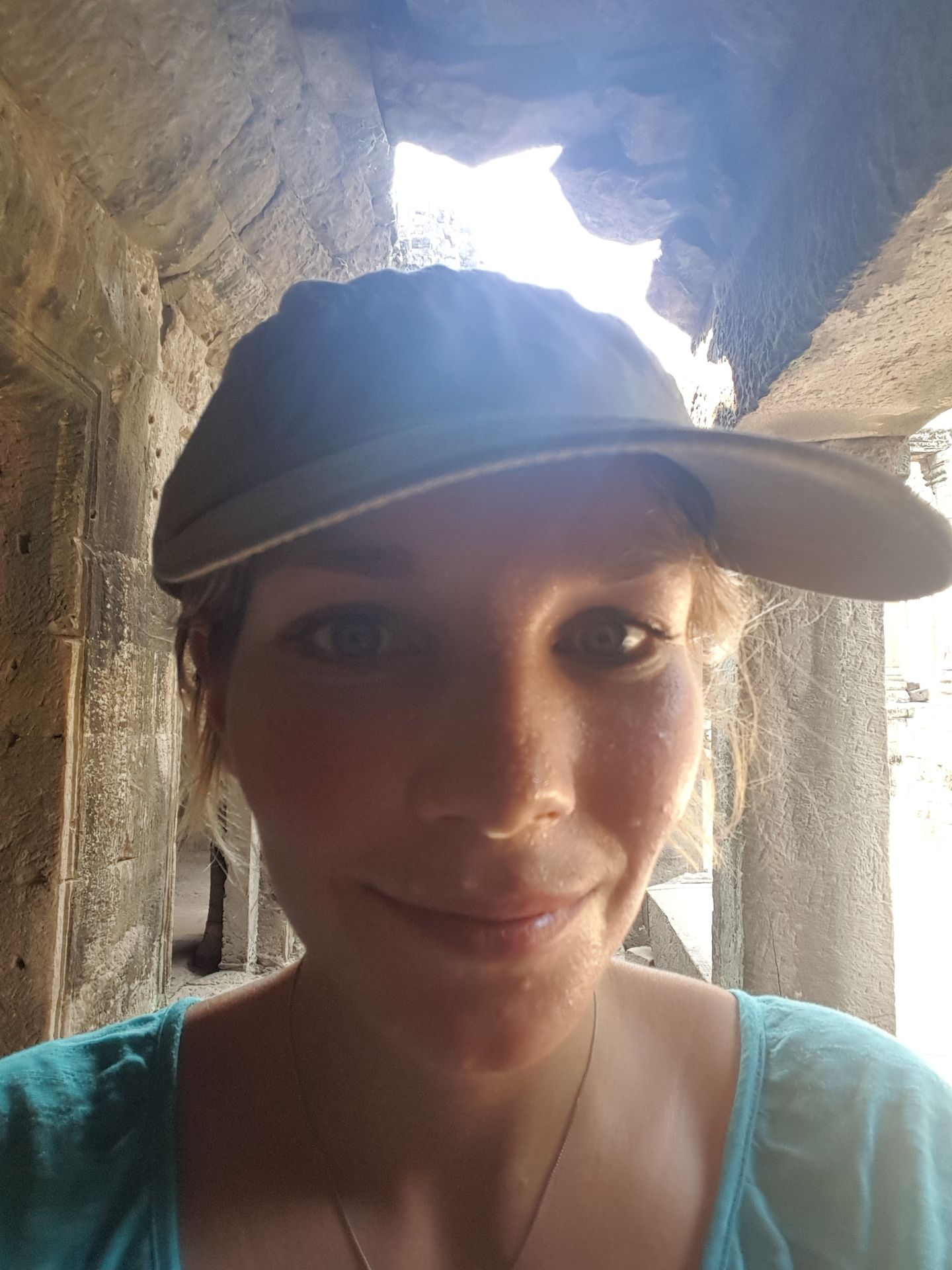
Our last temple to visit was Angkor Wat, which is also featured on the national flag. Compared to the previous temples, this one seemed almost plain. It wasn't our favorite. However, we saw something very bizarre. A tourist was sitting down to rest when a monkey sat near his leg, got closer... and started grooming him! The monkey plucked the man's hair and then put it in its mouth.
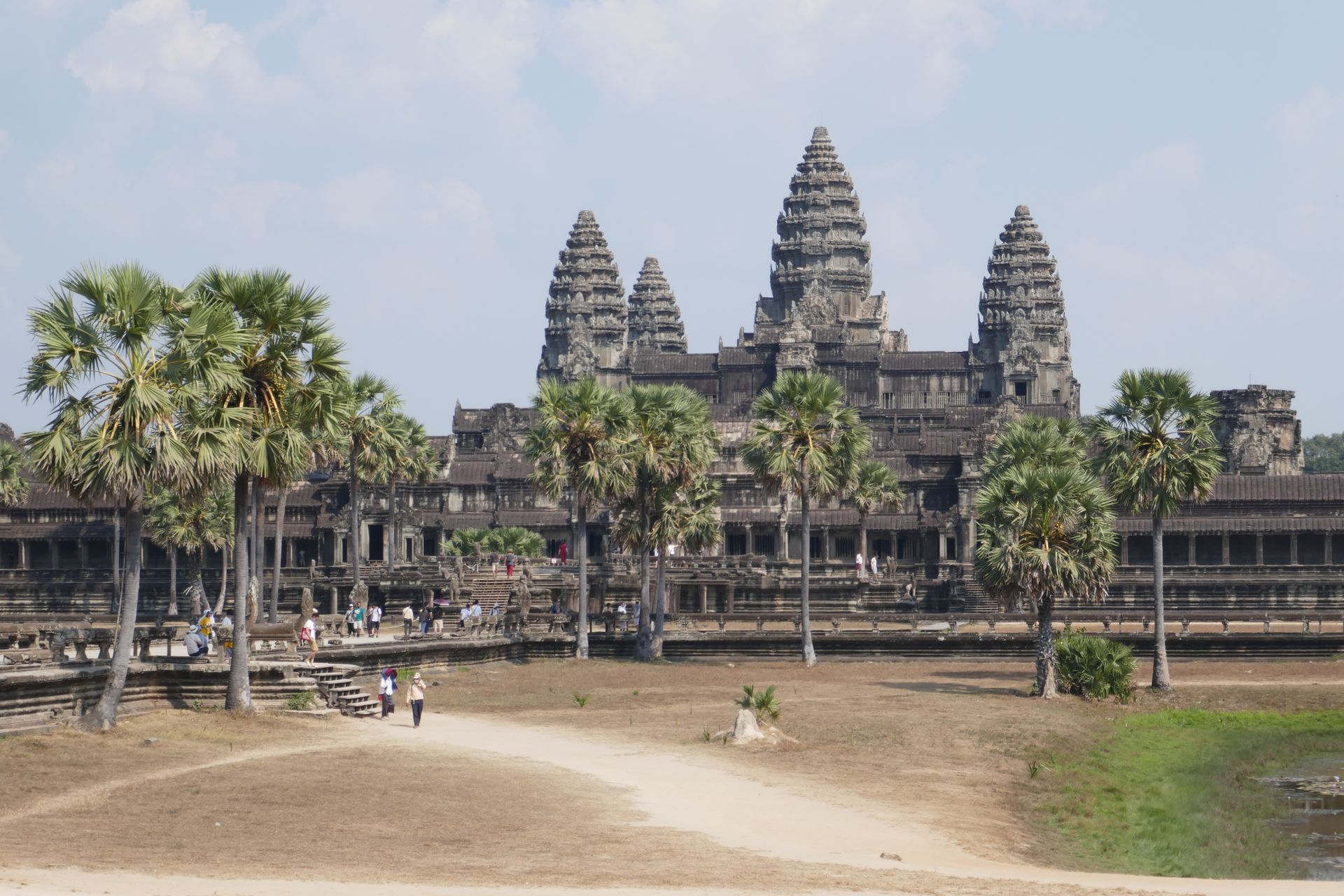
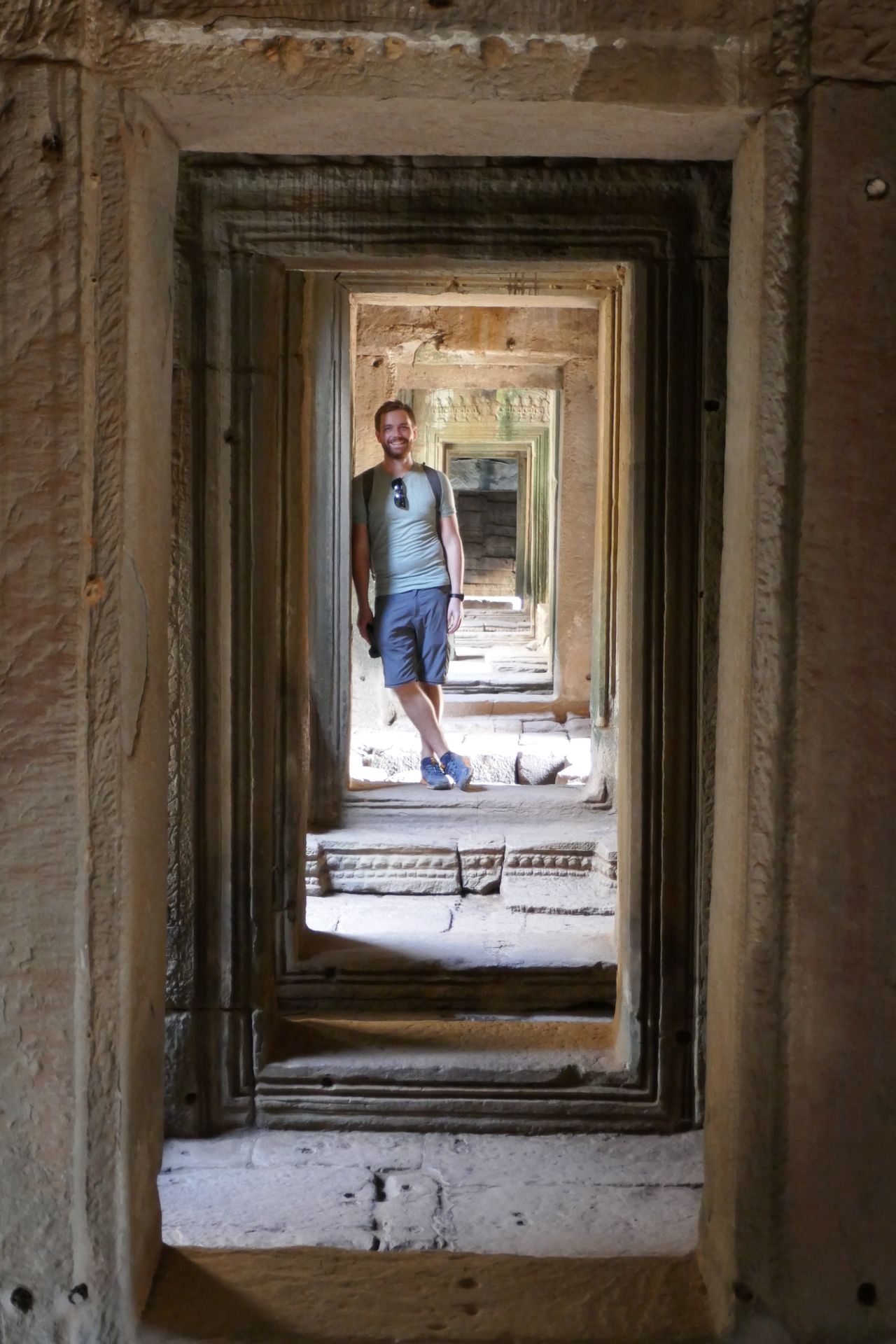
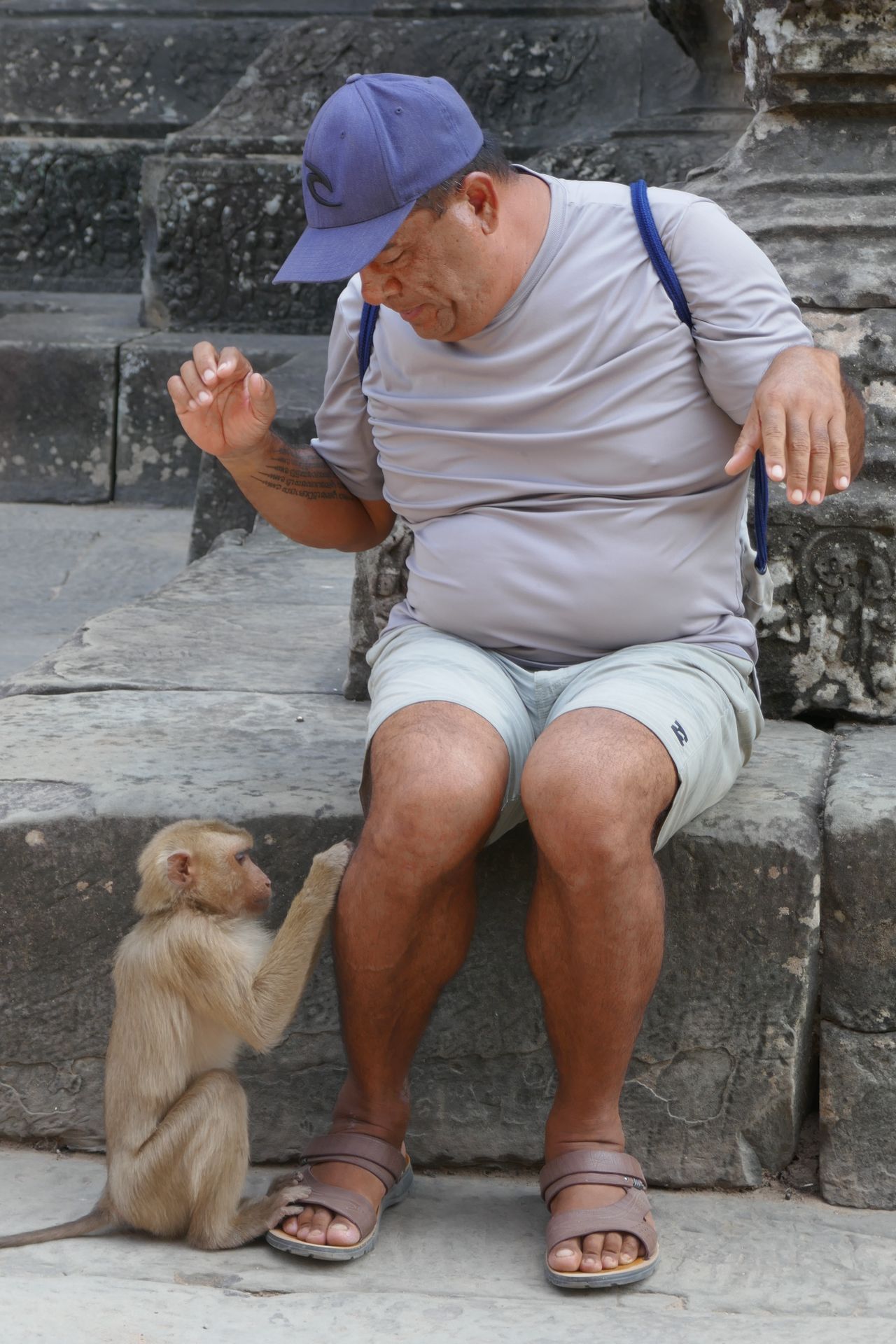
After recovering from our temple tour, it was time to continue our journey. We wanted to go back to the seaside. Even more so, we wanted to be surrounded by it and go to an island! Its name is Koh Rong Samloem, and it is located in the Gulf of Thailand off Cambodia's coast. How do you get there from Siem Reap? Overnight by bus from Siem Reap to Sihanoukville, then a 45-minute ferry ride to the island, then walk along the beach with our large backpacks until we reach a hidden turnoff. Then, take a 40-minute walk into the jungle. Follow the footpath over the hill until you are back at the water (hopefully on the right side of the island) and then walk a few more meters along the beach until you reach your camp. Simple, right? ... or not, because the night bus made restroom stops at night and turned on all the lights. The beds were barely 1.10m x 1.80m but meant for two people, including hand luggage. The blankets smelled like dirty feet and hadn't been washed in a long time. It's hard to get much sleep like that. When we arrived in Sihanoukville, the rain had turned all the roads (there is currently no asphalt here, more on that later) into muddy paths. Our tuk-tuk took us to the ferry pier, but there were no ferries today because the waves were too high. So, we got back in the tuk-tuk and drove to the other end of the city to the port. Off-road tuk-tuk ride through the ugliest city in the world. We had never seen anything so terrible before, not like here in Sihanoukville. It was probably quite nice here a decade ago, but then the Chinese invaded and built one casino after another, along with high-rise buildings. The city is currently just a construction site, gravel roads, and a lot, really a lot of garbage. And it's everywhere. We had read beforehand that the city had gotten worse over the years, but what we saw was even worse than we thought. Hopefully, other cities won't experience the same fate. We tried to spend as little time here as possible.
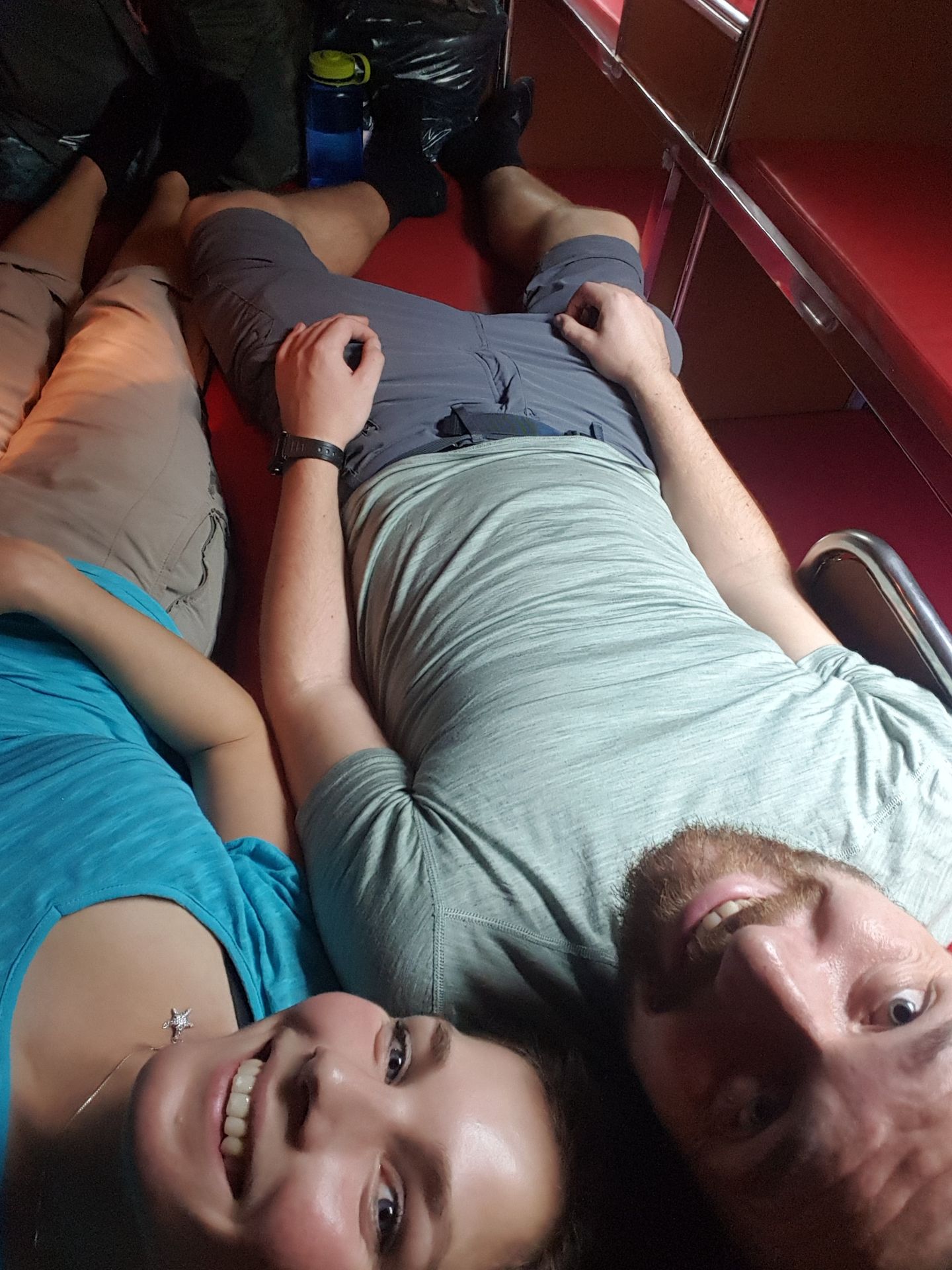
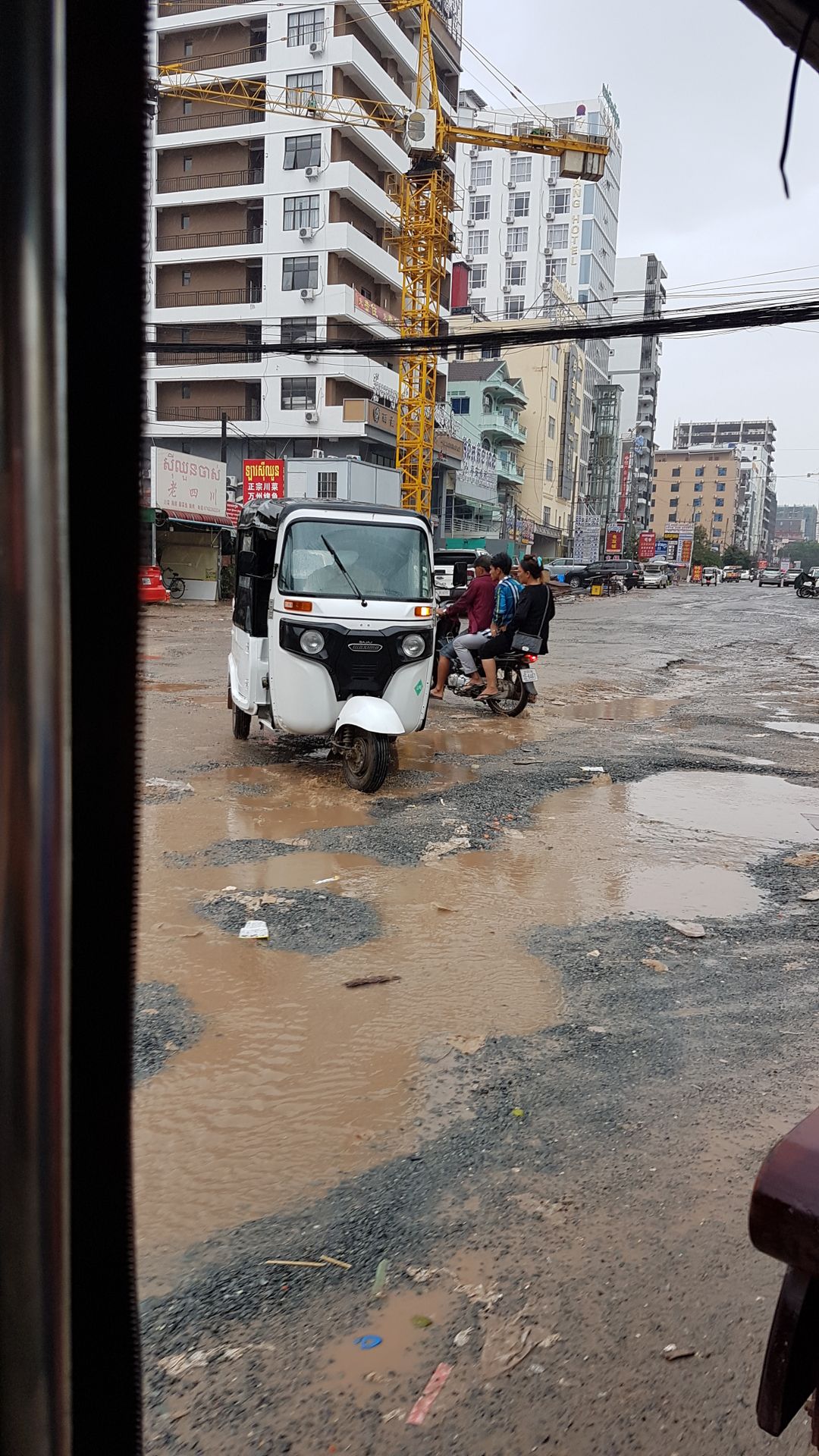
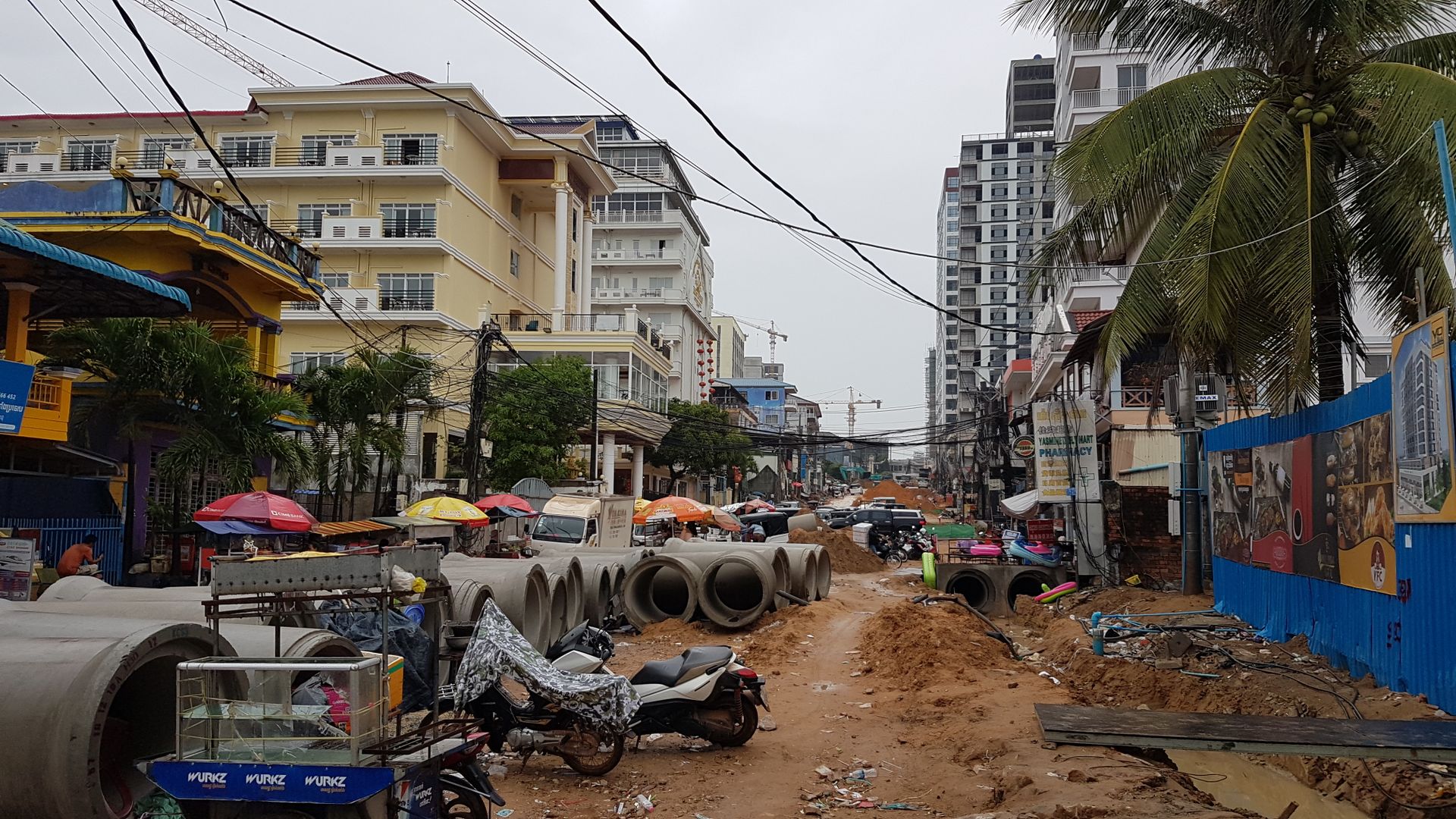
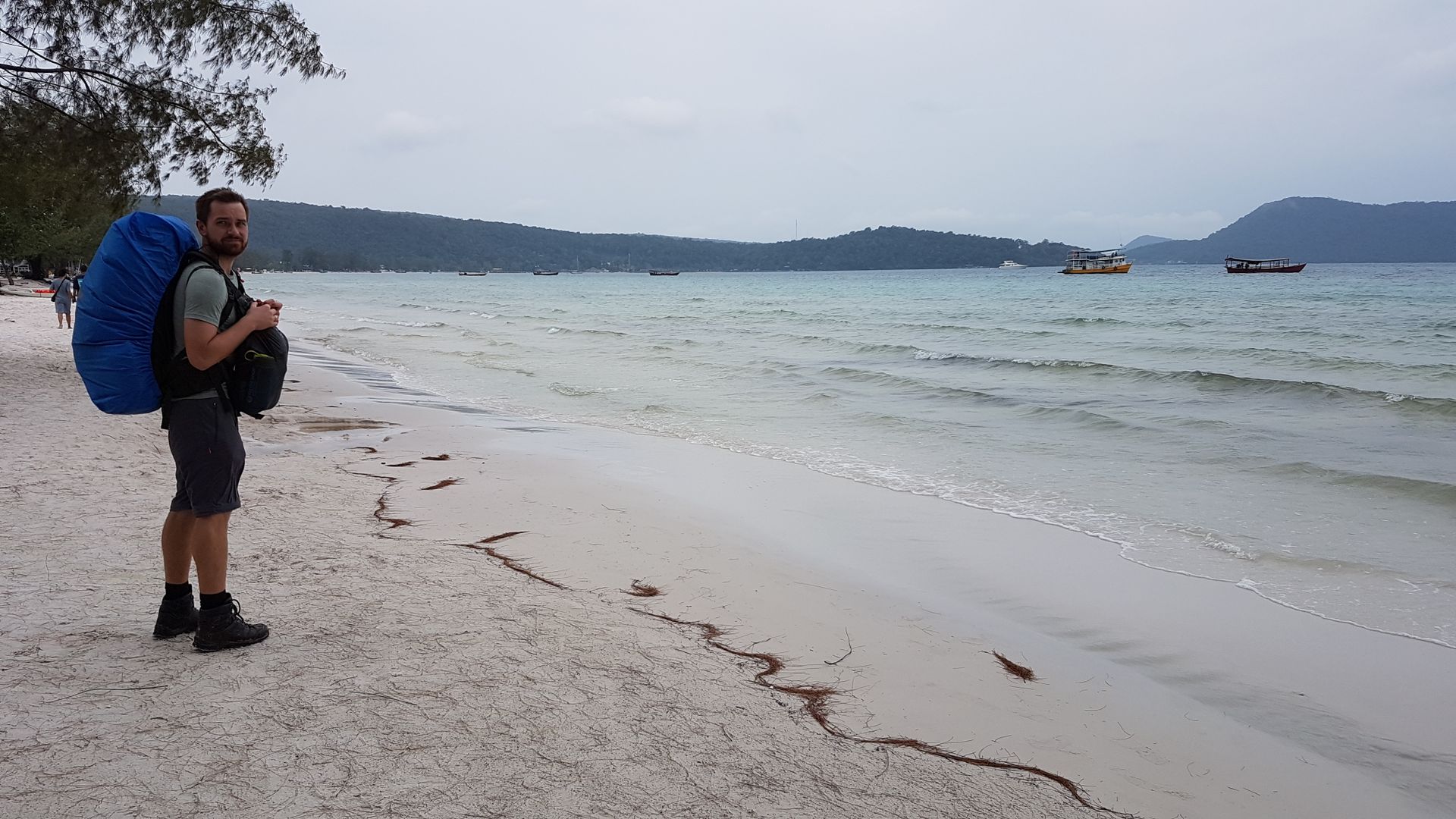
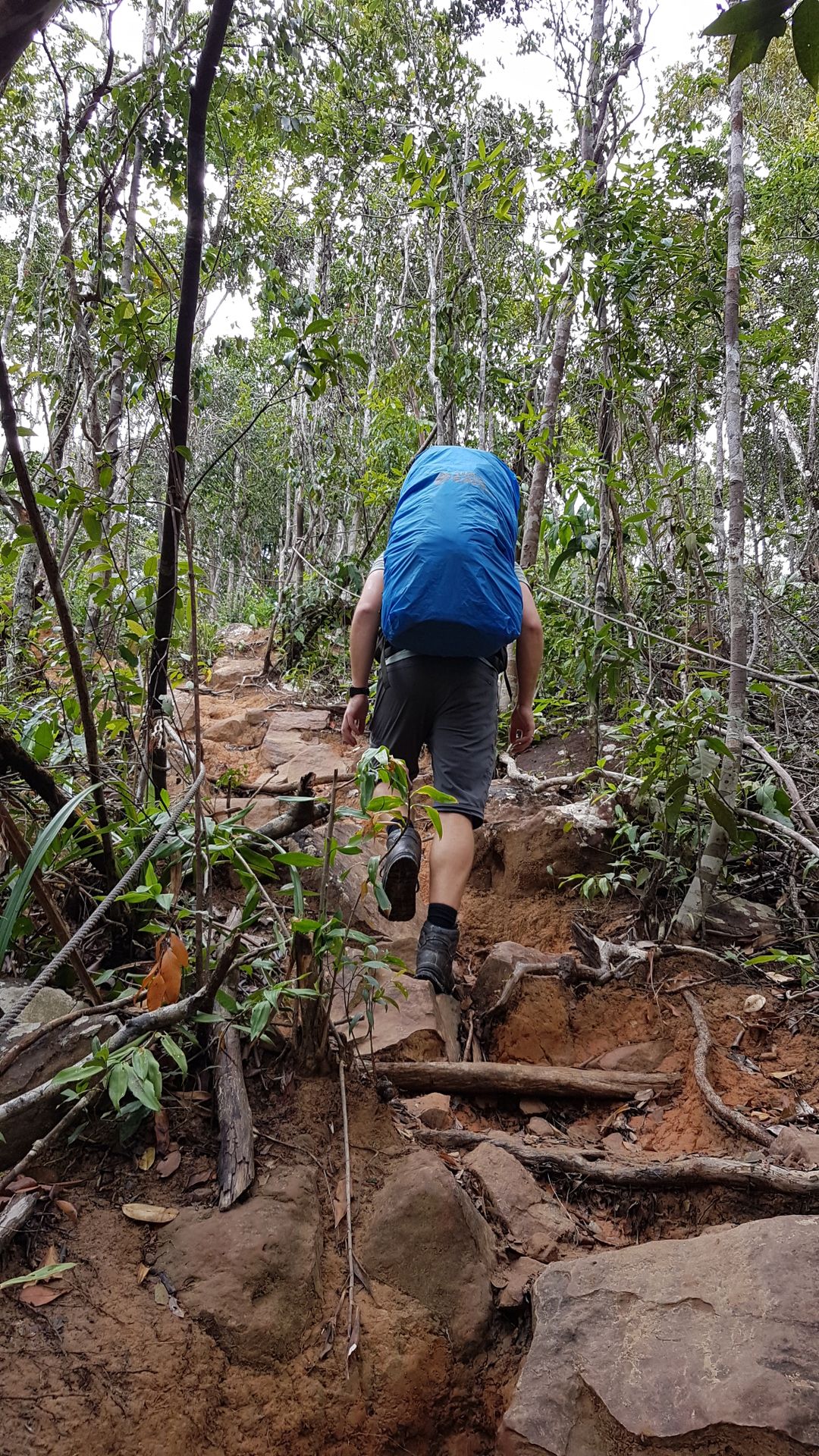
And just 20 km away, on our little island in the sea, there was luckily no more noise, no more sights, and no more smells of that. The wind and rain that had been present here the day before had washed some trash onto the beach and stirred up the water (making the visibility underwater worse), but that subsided after a day or two. Then we had a beautiful sandy beach with clear water and a view of the sunset. Our accommodation for the first three nights was a hanging tent. It is a tent that is suspended between three trees. It looks cool, and we had a direct view of the water and the Sunset Beach, but the suspension also causes the tent to bounce like a trampoline when one person moves in bed. Right in front of the entrance, we could hang our hammocks, and that's where you would have found us most of the time if you were looking for us :) The days consisted mainly of eating, snorkeling, hanging in the hammock, reading, or doing nothing. And the happy hour at the Robinson Bar (cocktail $3.50).
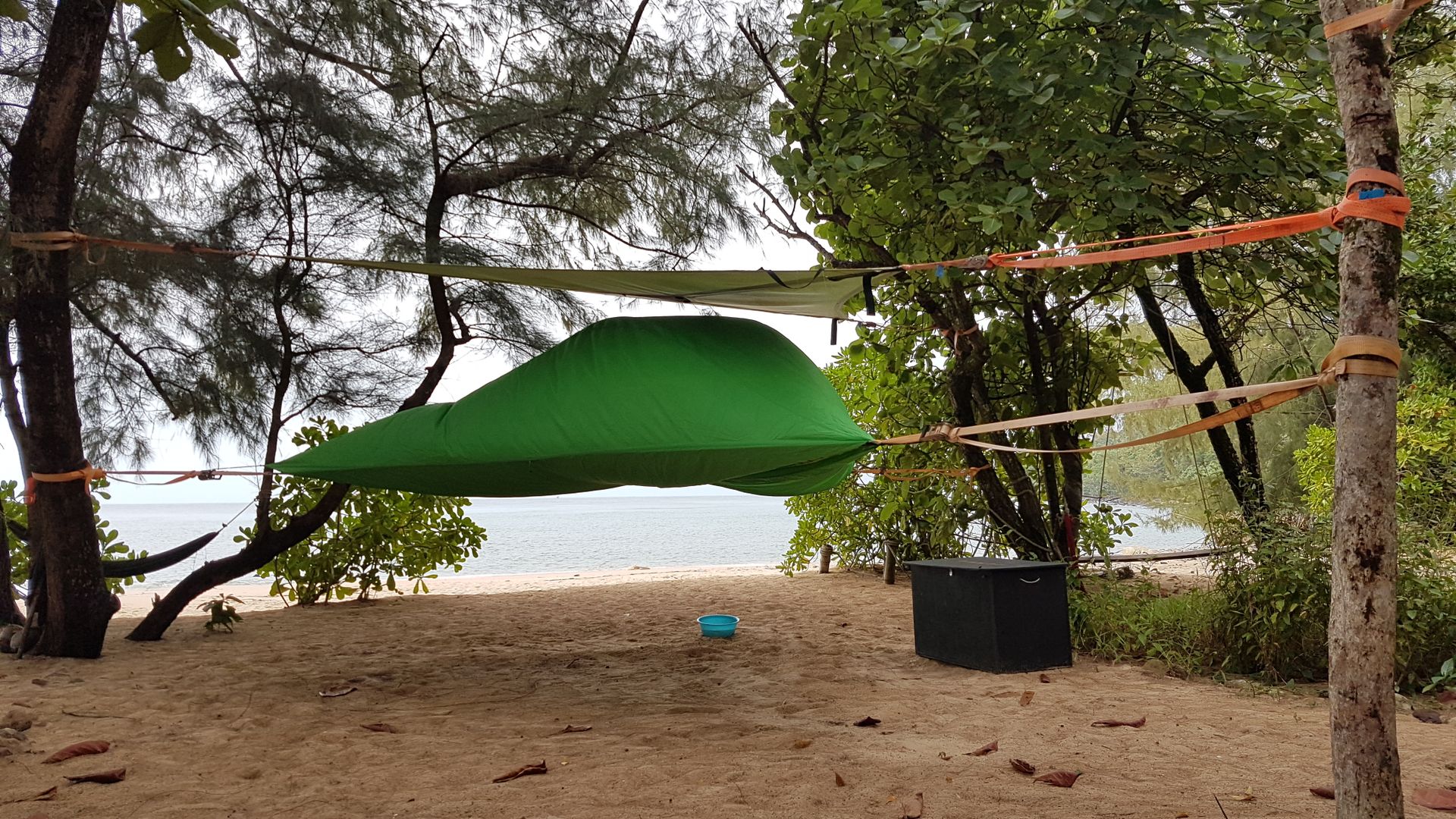

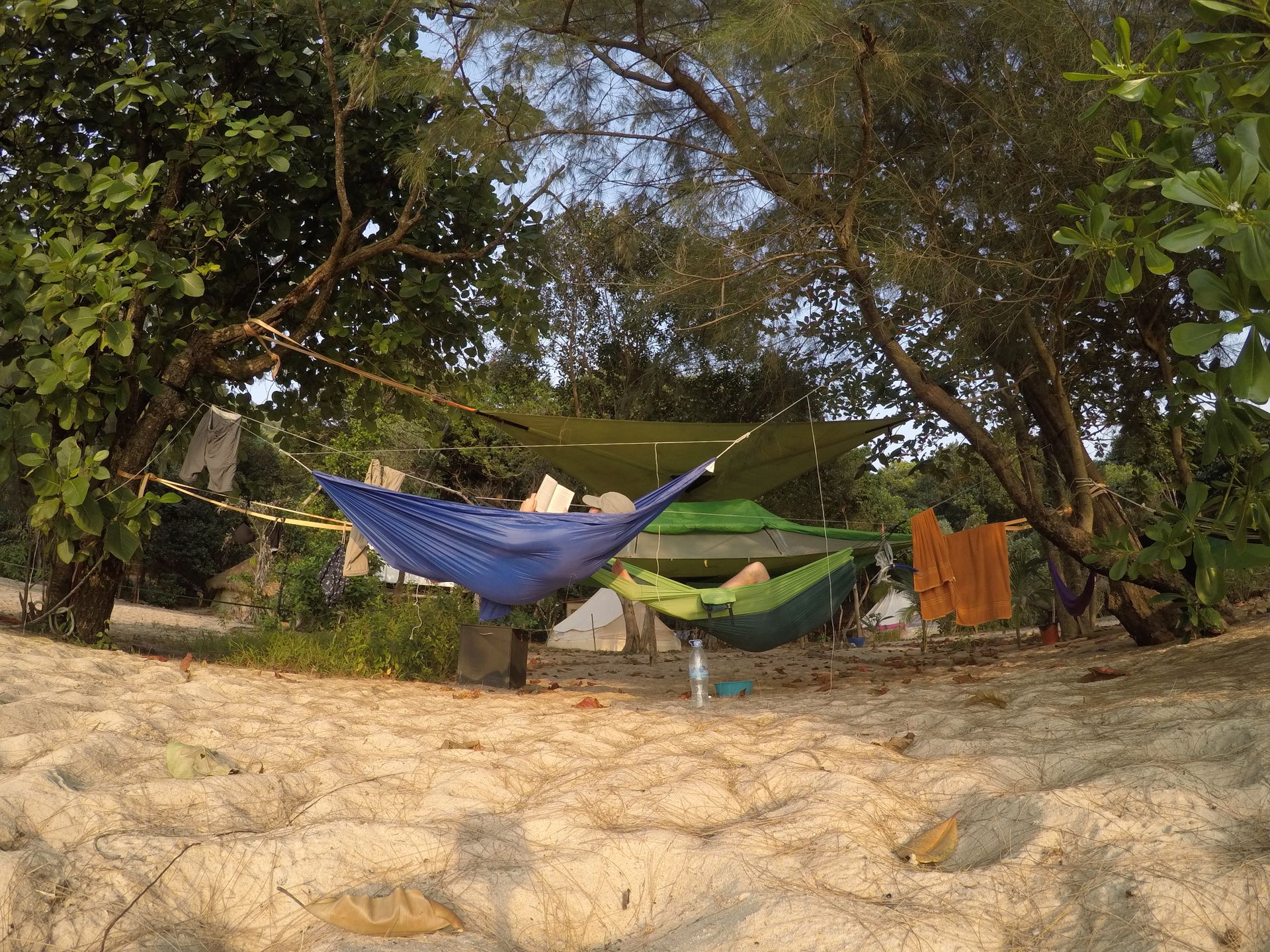
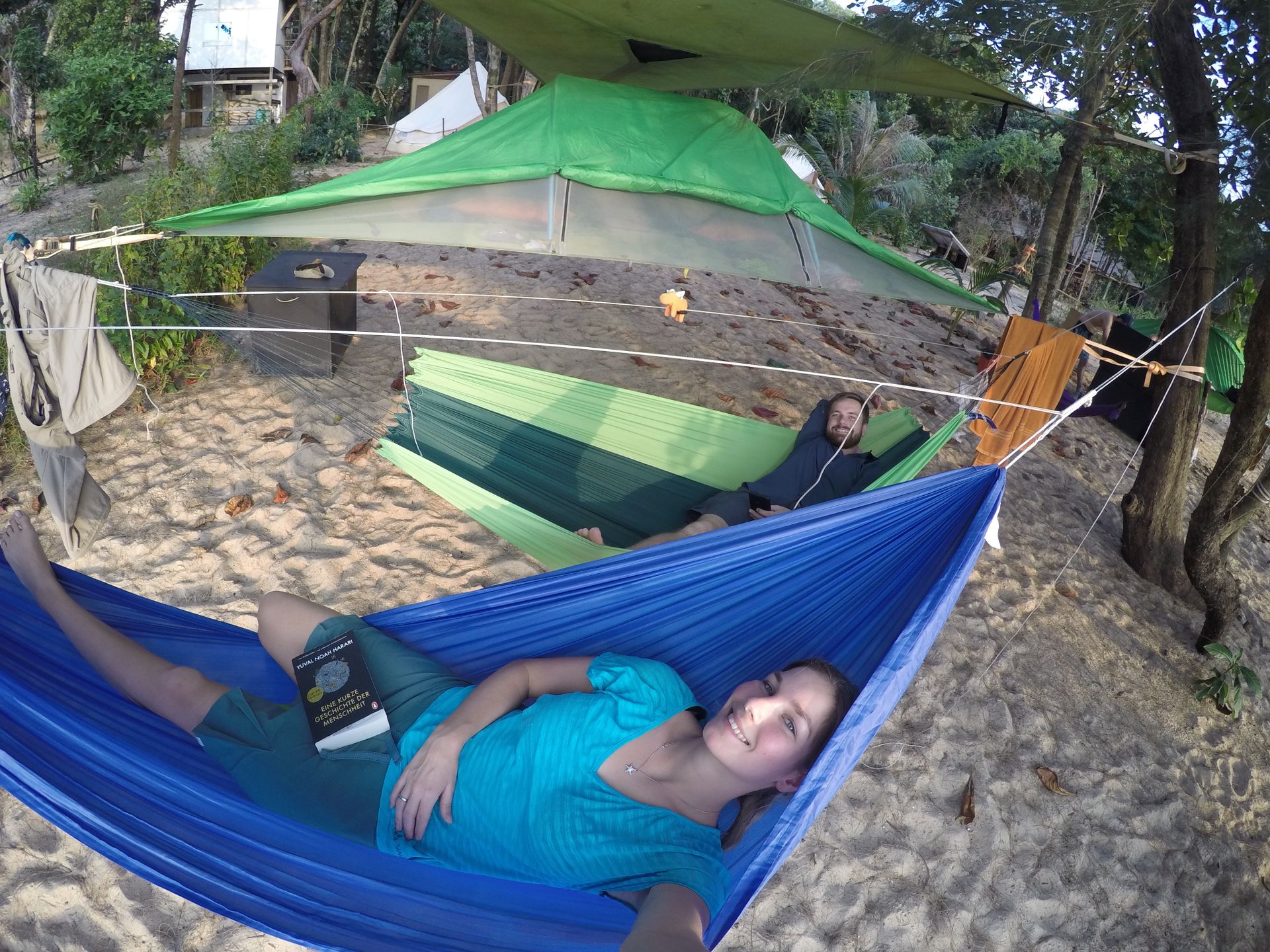
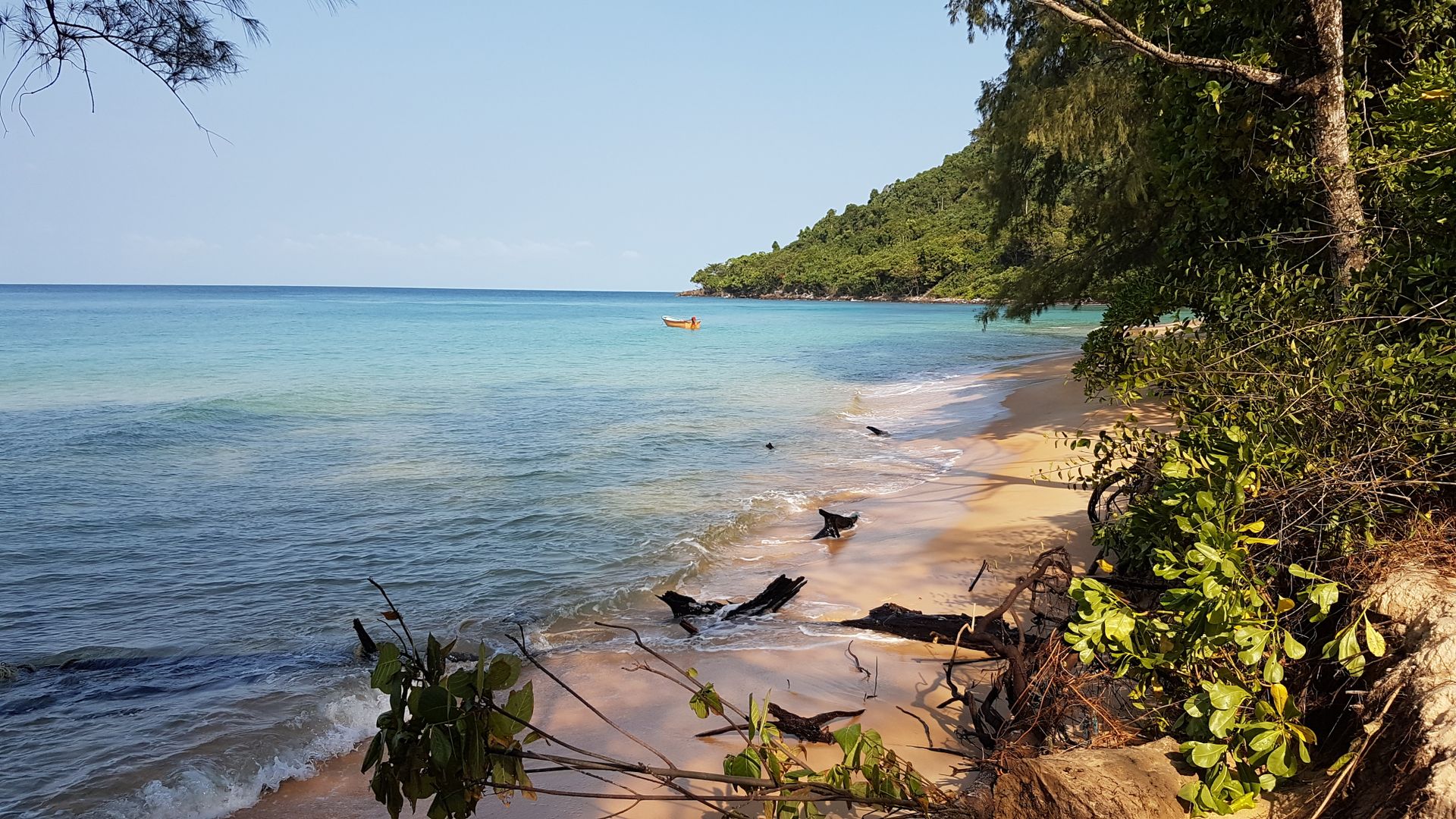

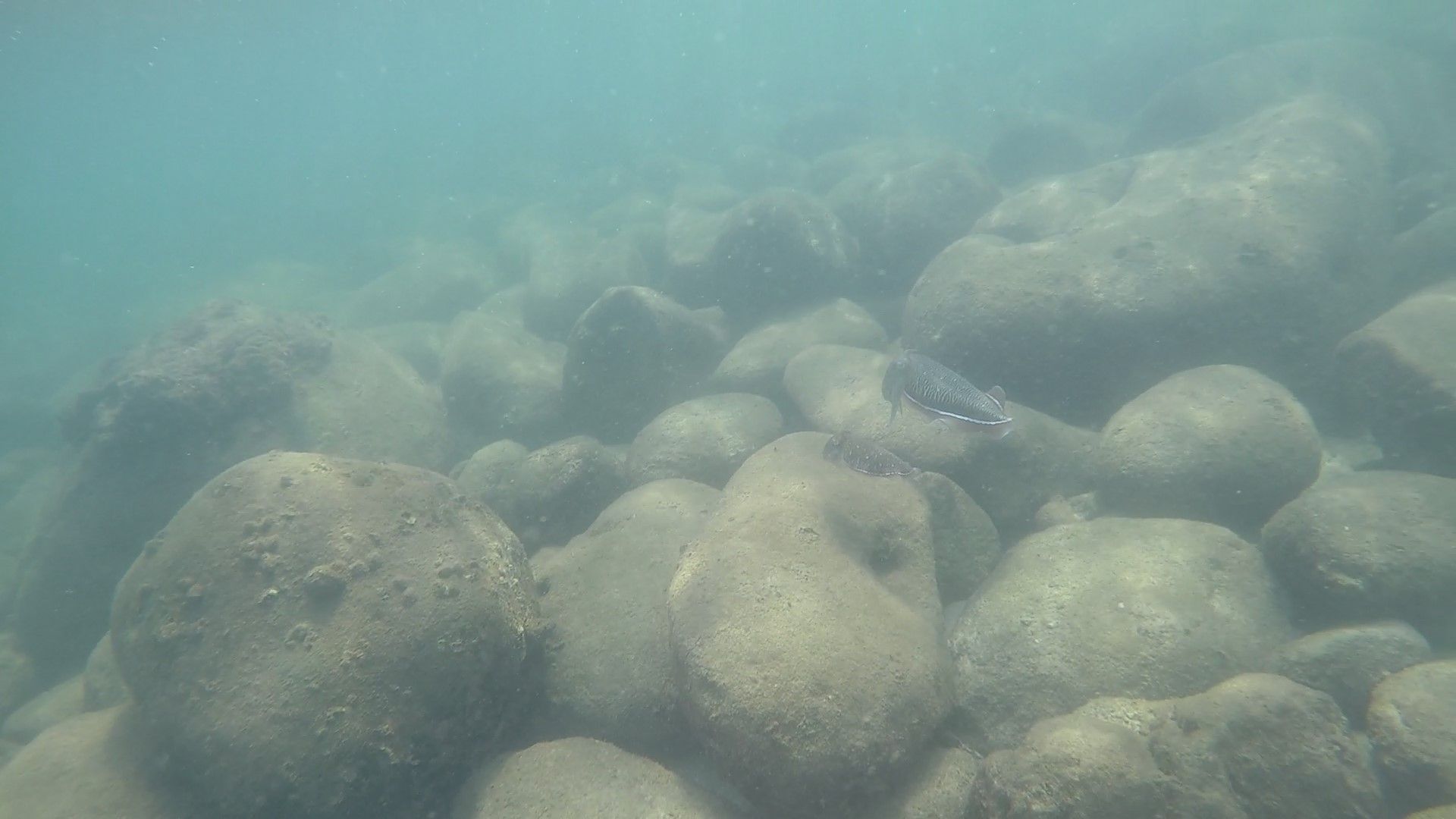
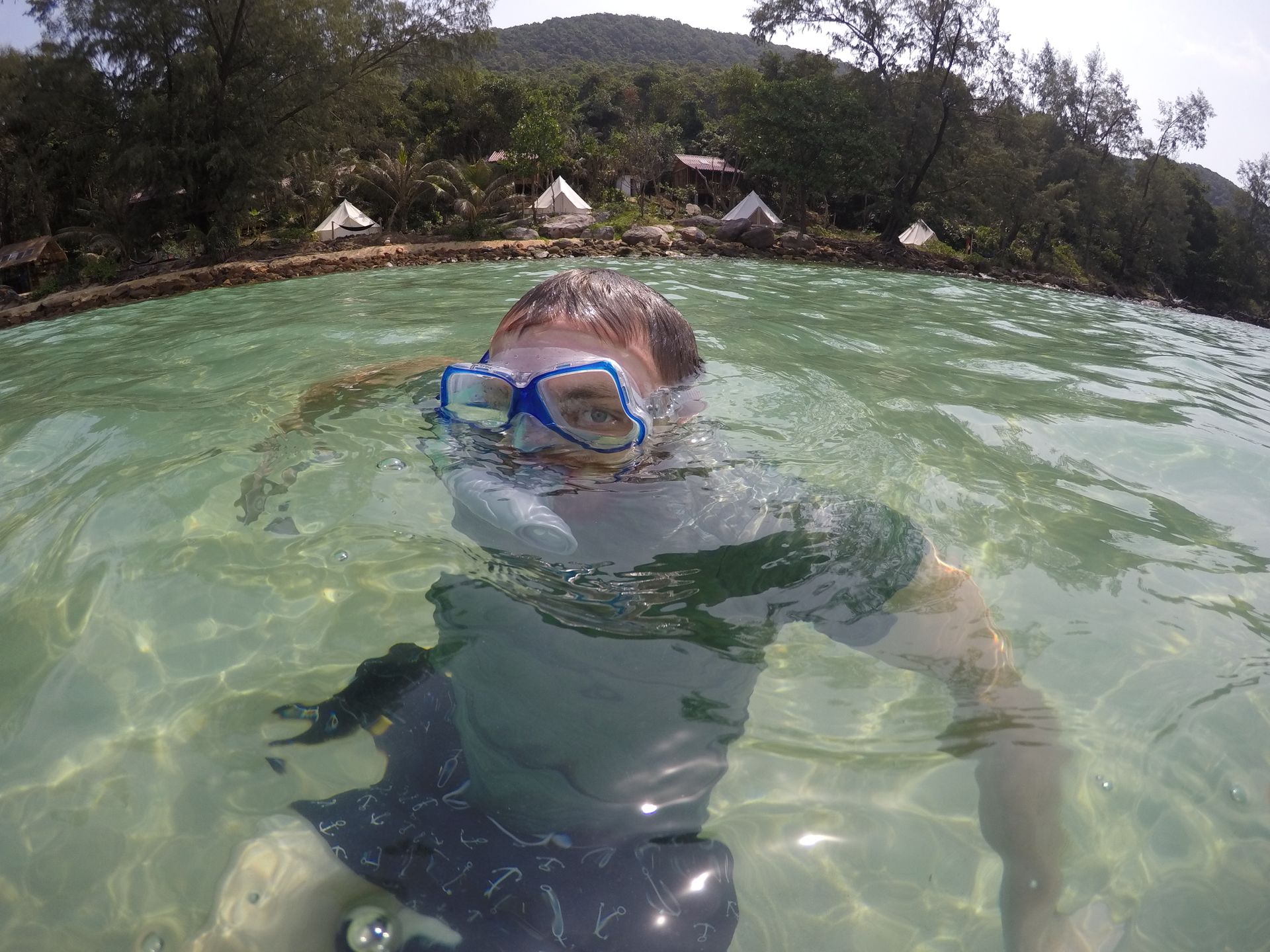
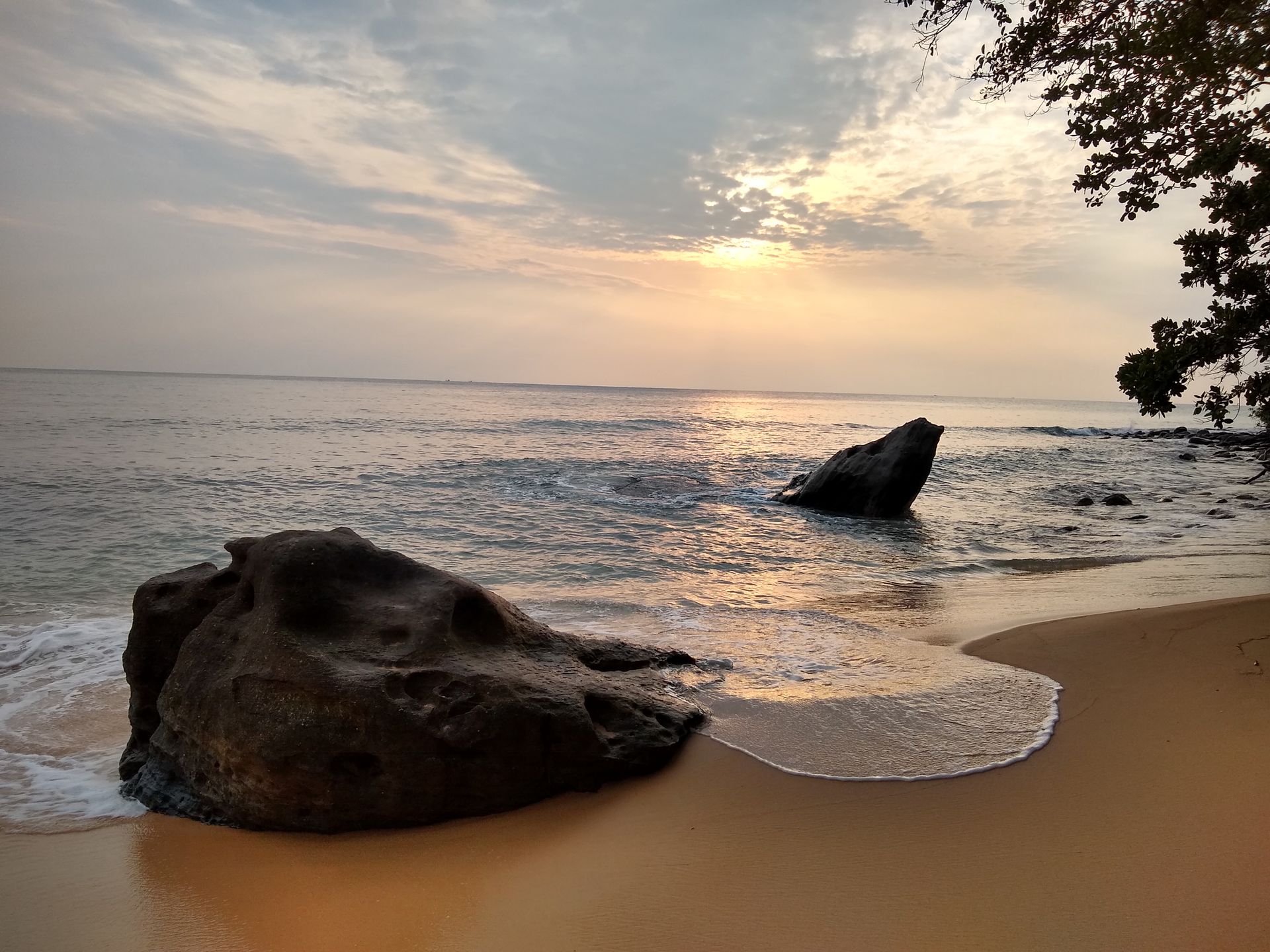
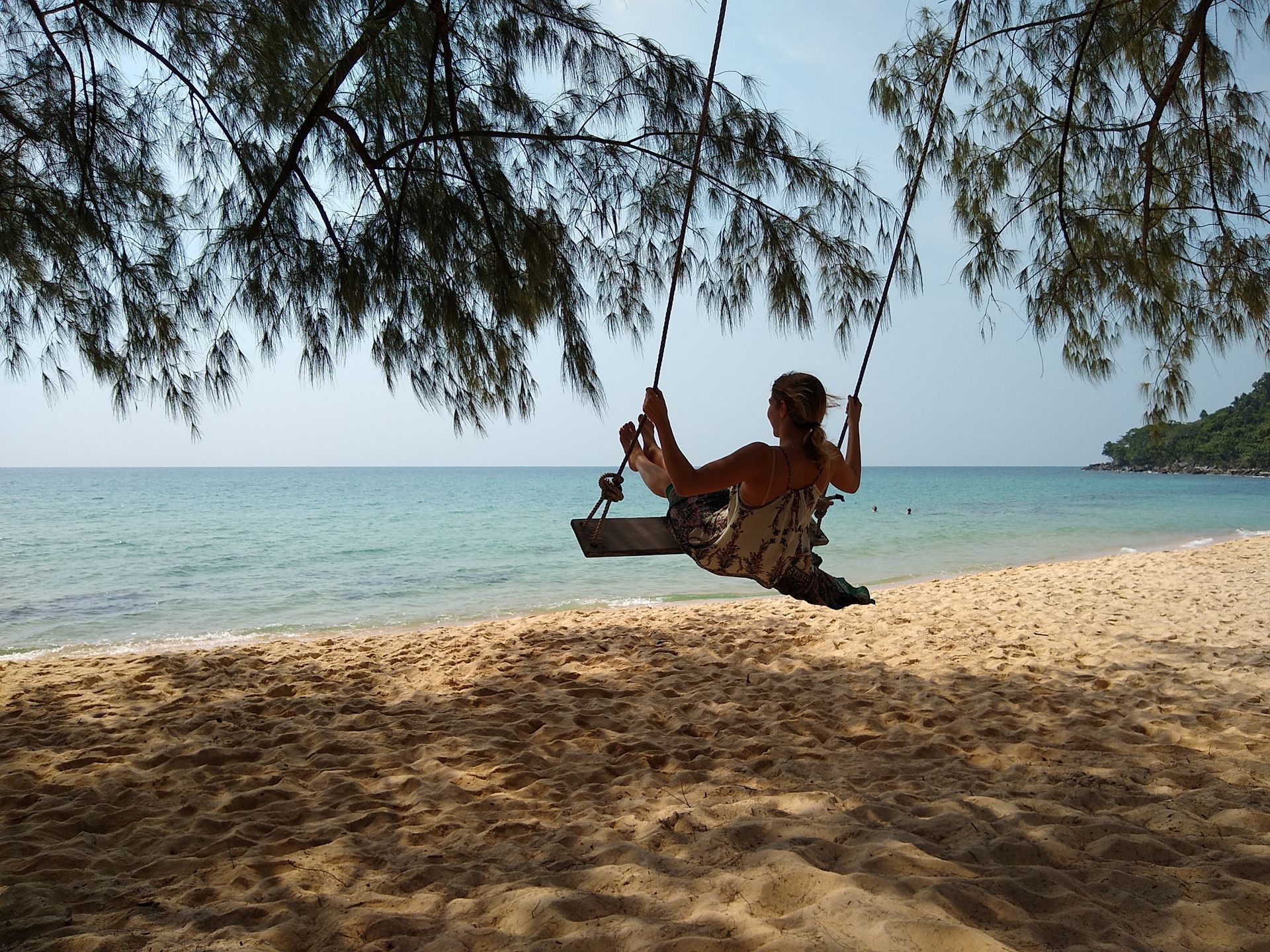
We spent a few days like this and then went to Kampot. If anyone ever said to us, "Go where the pepper grows!", we can now answer, "We've already been there, it's beautiful." Because here near Kampot, there are several farms that grow the famous Kampot pepper and ship it all over the world. The city itself is much more pleasant than Sihanoukville, not comparable at all. It is an older French colonial city and still has that charm. For one day, we rented a scooter and drove to the pepper farm. We watched the pepper growing, tried all the varieties, and then took a cooking class for Khmer cuisine (the majority of the Cambodian people are Khmer), of course, seasoning the food with the freshly harvested pepper.
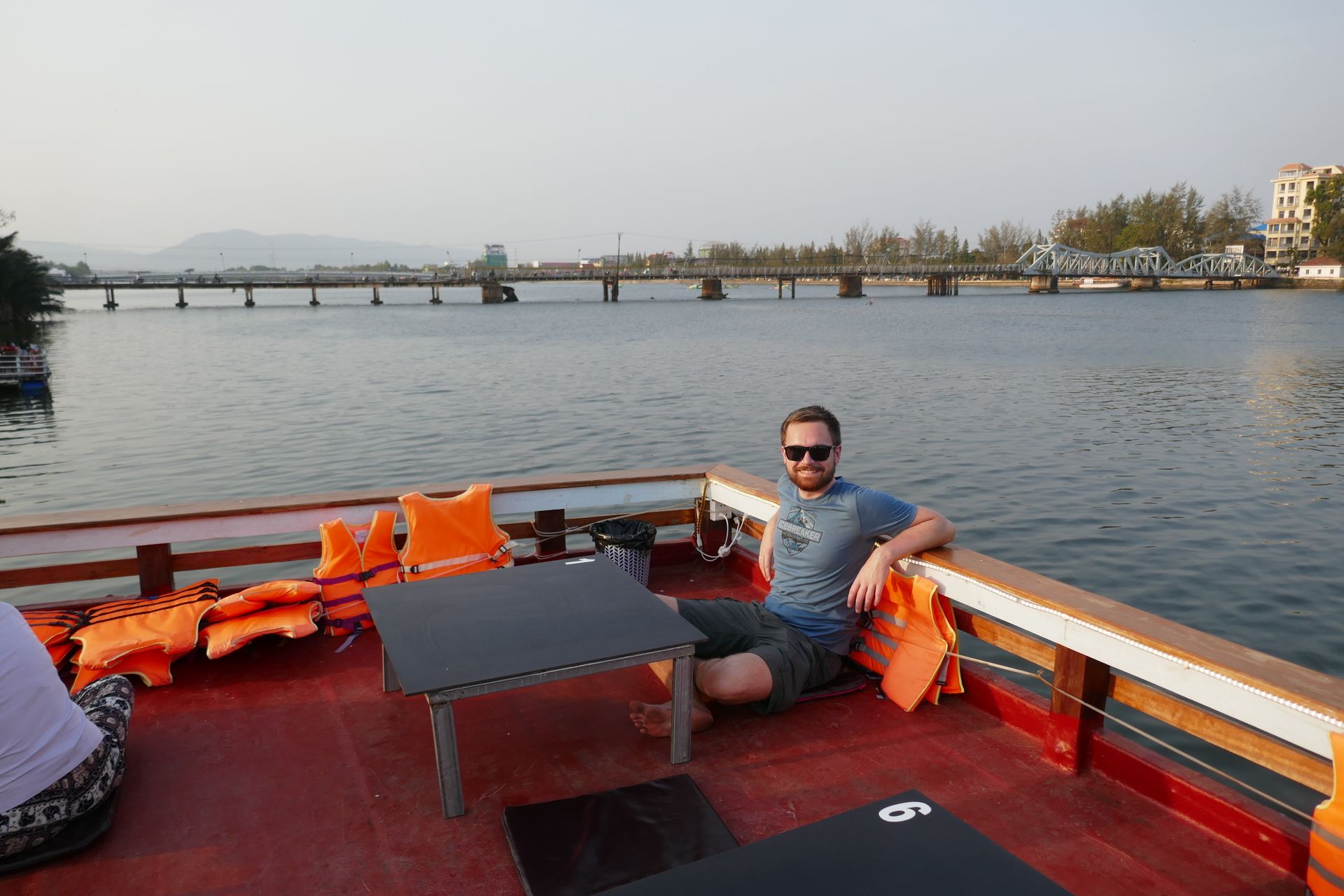


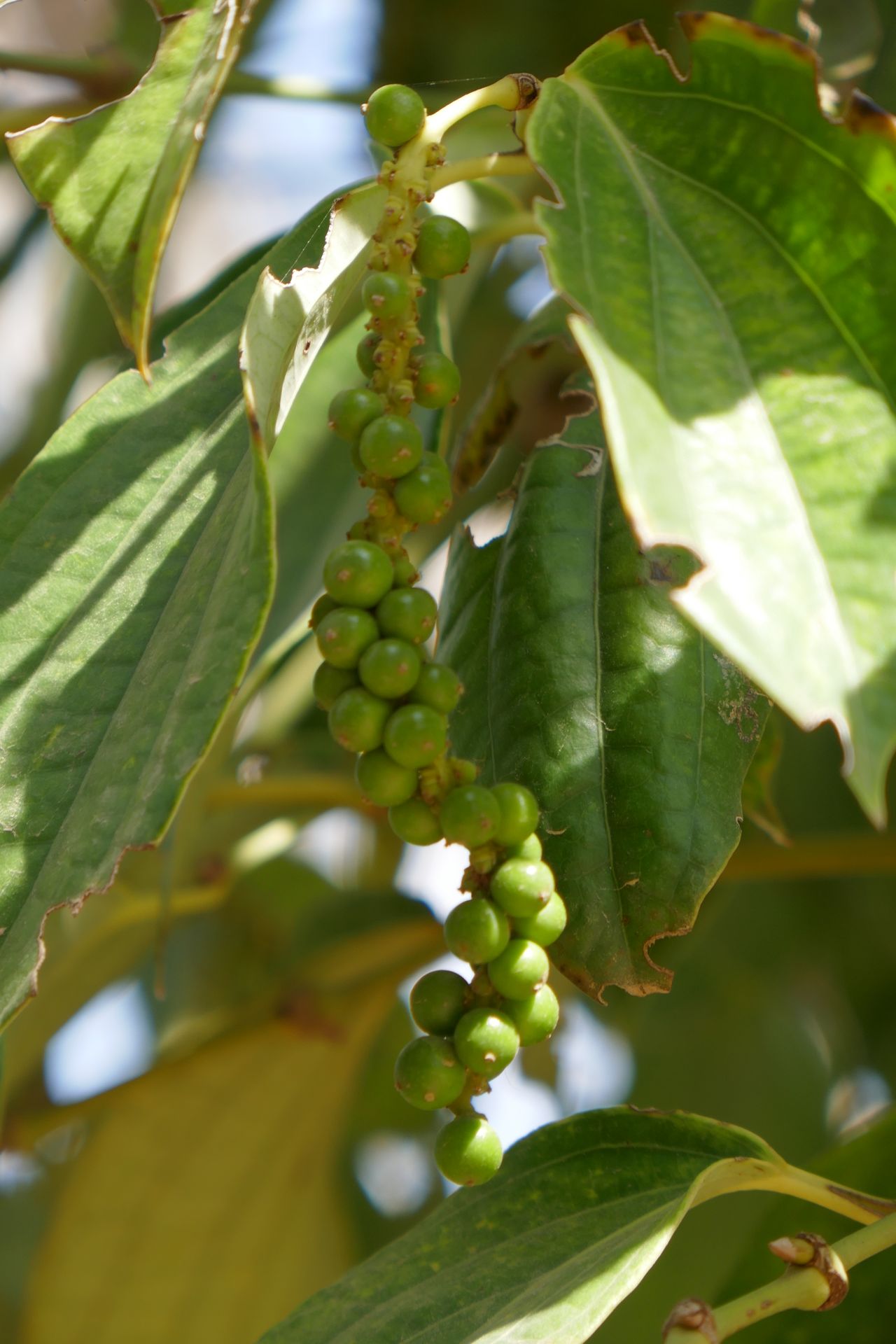
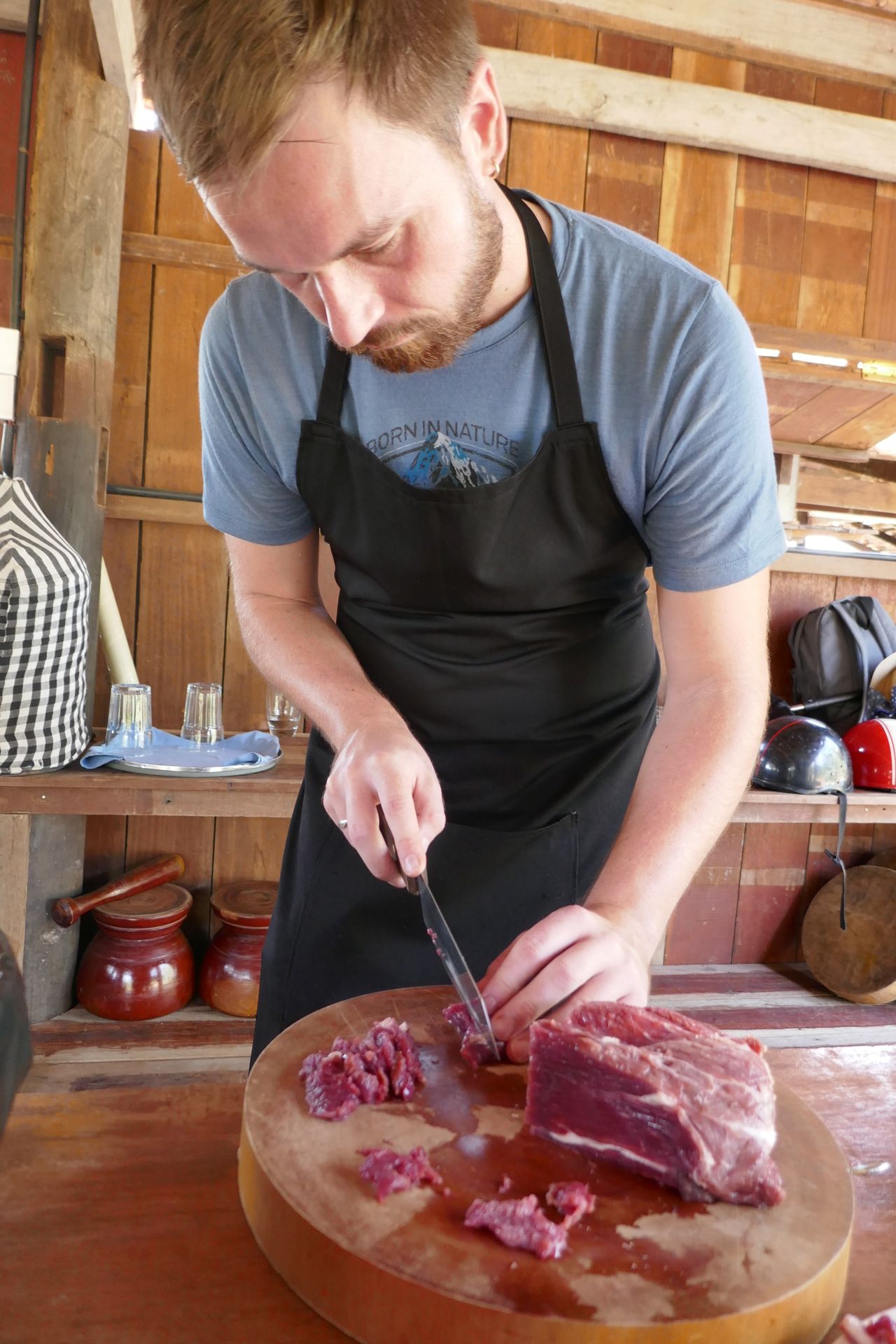
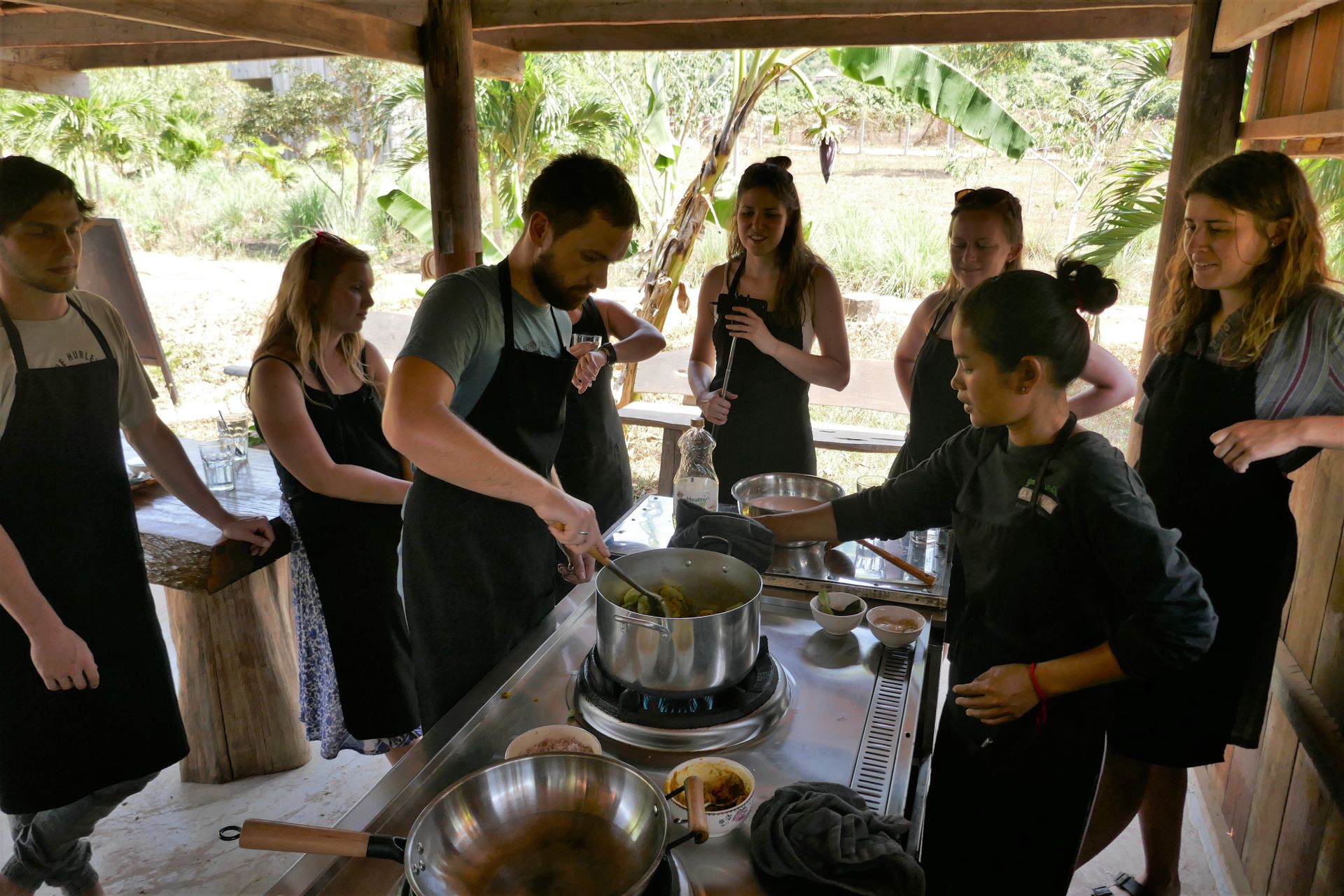
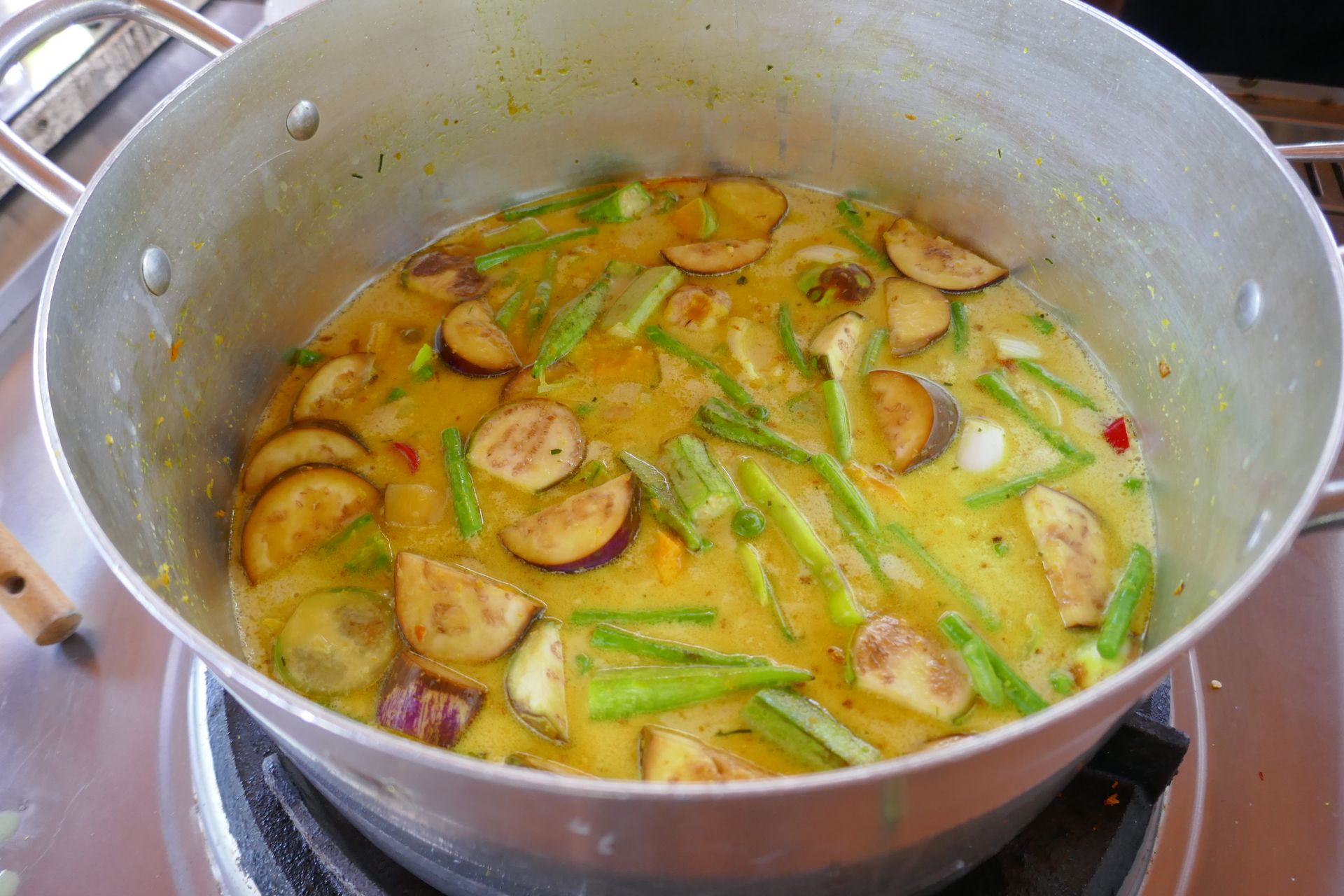

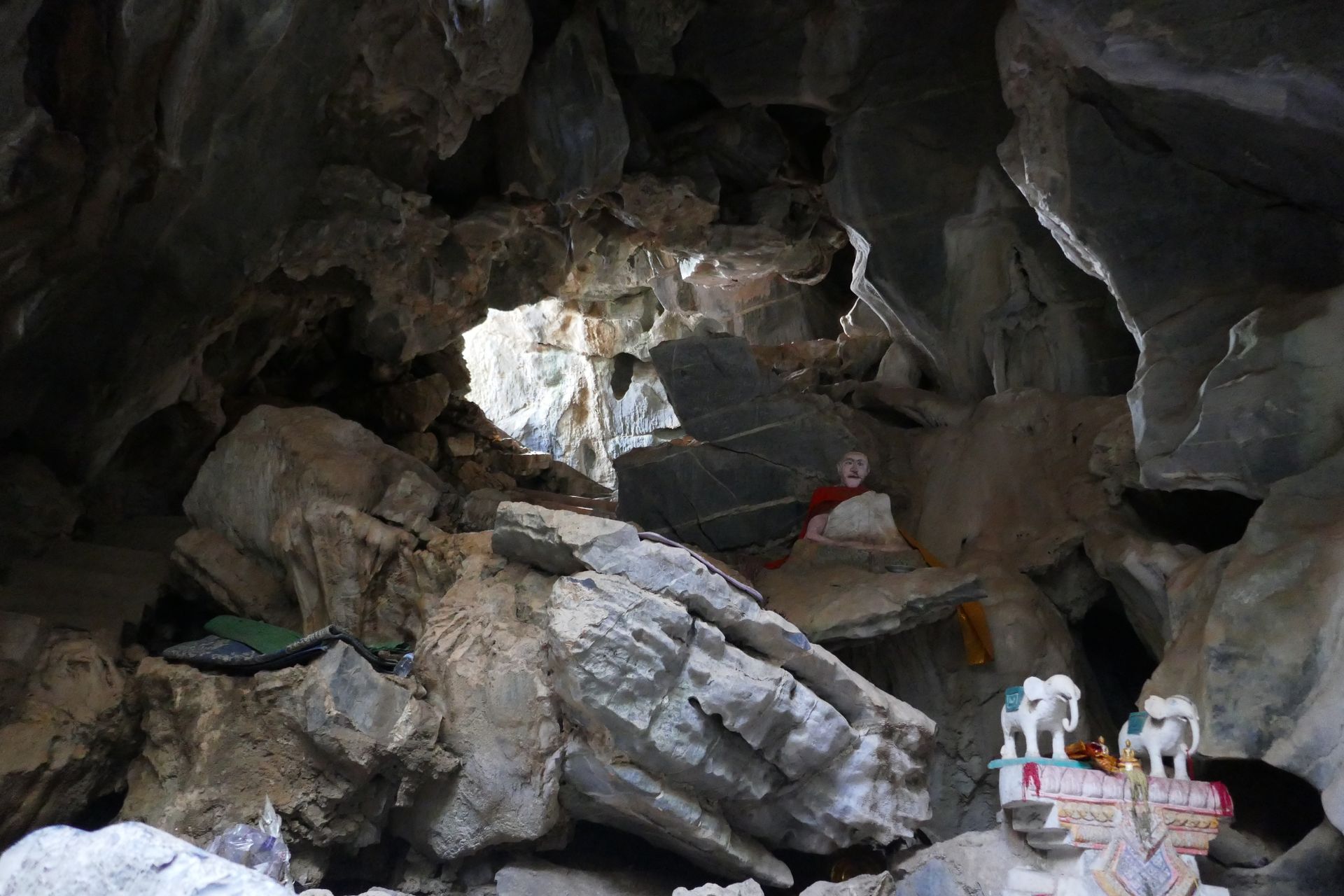
We will still be in Cambodia for three more nights and then fly from the capital Phnom Penh to Palawan Island in the Philippines. In the north, there is a beautiful bay that we want to explore.
By the way, Cambodia is truly the land of hammocks. Almost everywhere you look, you can find them. The Khmer people grow up in them, spend their lunch breaks in them (tuk-tuk drivers hang their hammocks in the tuk-tuk!), and where there is no hook/tree/pillar, there is a frame to hang them on. And of course, hammocks are also sold in many stores.
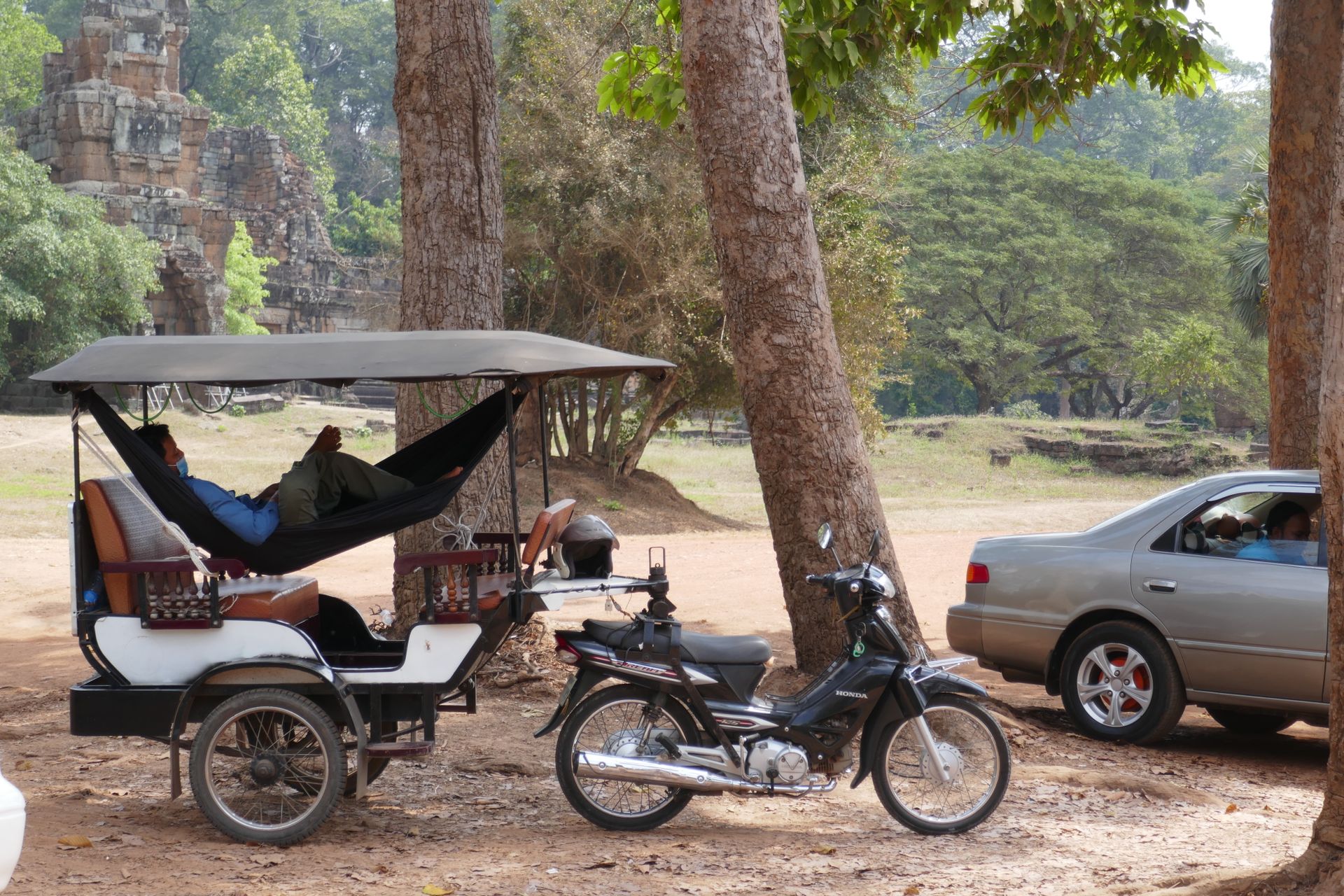
Iscriviti alla Newsletter
Risposta (1)
Caroline
Ich freue mich jetzt schon darauf bekocht zu werden, wenn ihr wieder da seid :)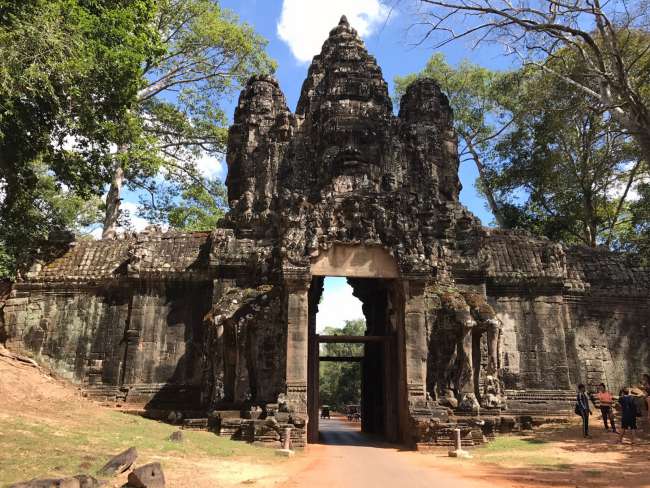
Rapporti di viaggio Cambogia
